The Symbols of Ireland & Their Great Significance in Irish Culture Explained
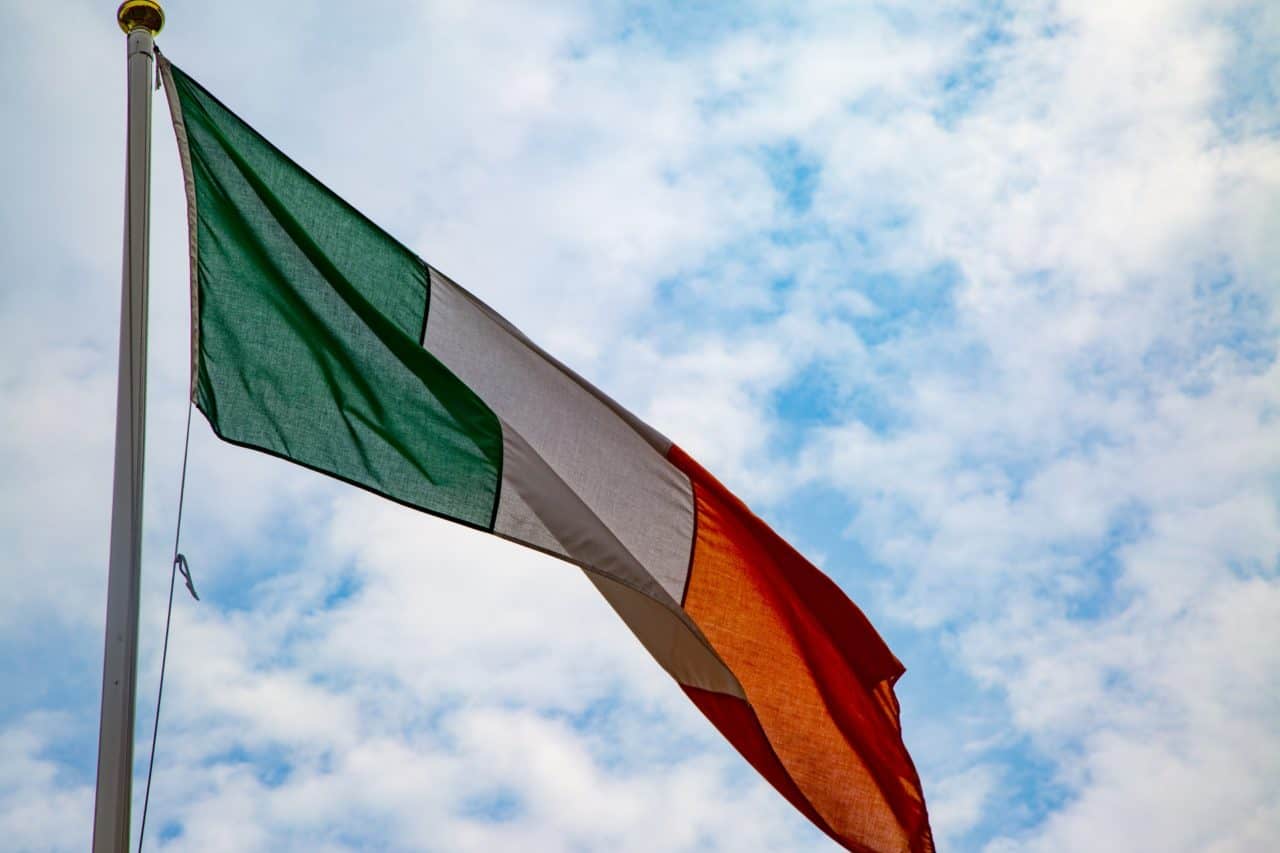
Updated On: April 22, 2024 by Ciaran Connolly
Irish heritage embraces numerous symbols, each with its significance. Most importantly, the symbols of Ireland unravel the creativity of the folks who use them. Let’s check out these Irish symbols and learn about what they mean!
The Celts built their civilisation centuries ago with unique customs, festivals and beliefs. The Celtic people influenced many Western European countries, but perhaps none more than the island of Ireland.
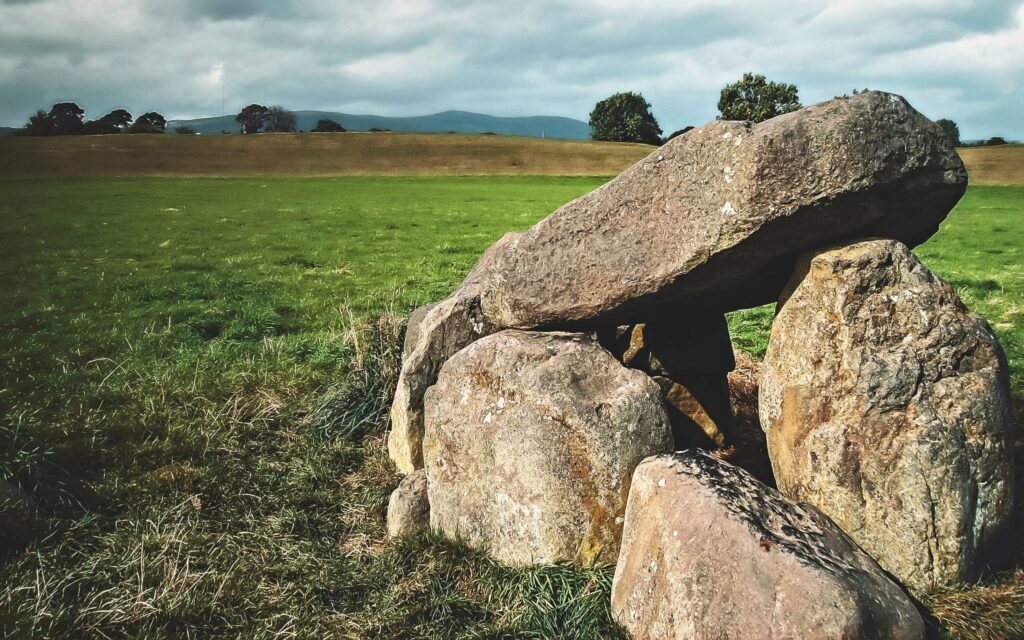
There are many other reasons behind the existence of Ireland’s symbols, which we will explore in this article. Scroll down to read through the Irish symbols, or click on a heading in the table below to jump ahead!
Table of Contents
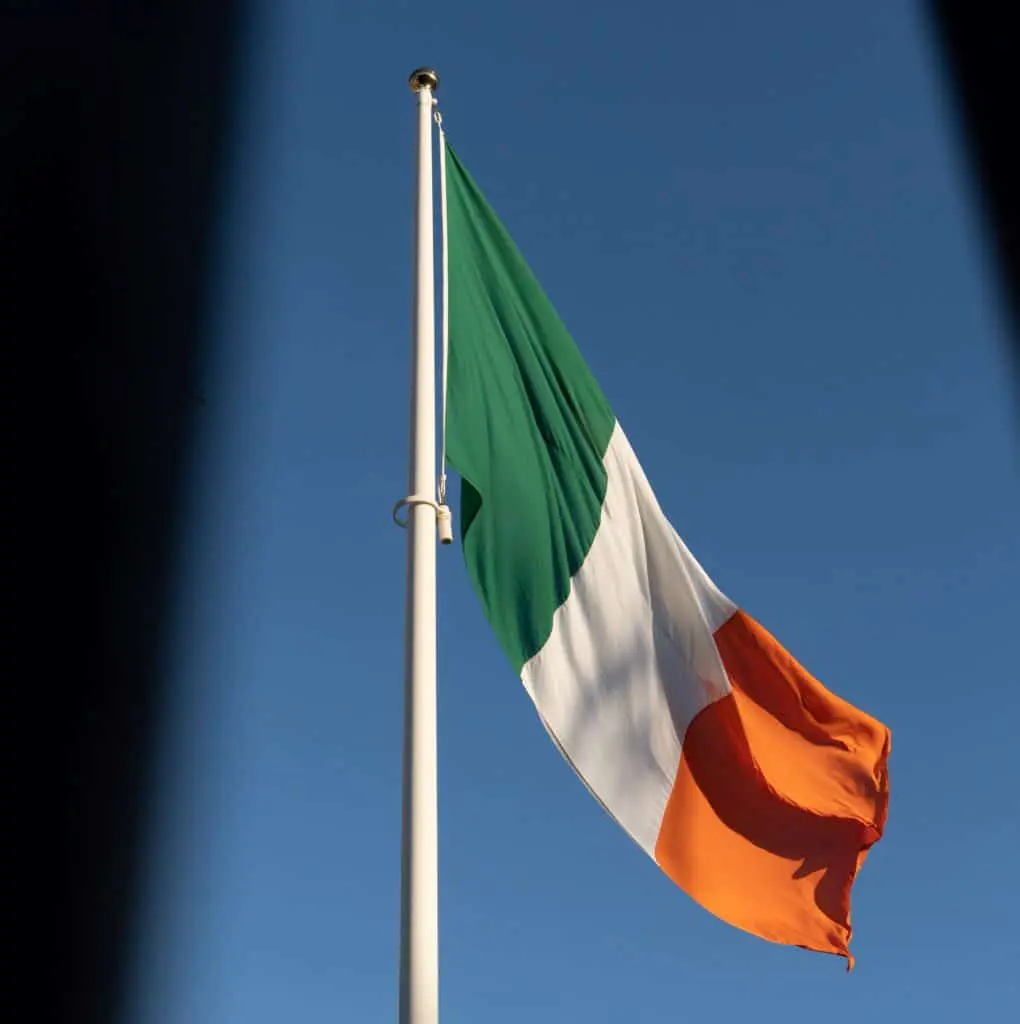
The Irish Flag – Symbols of Ireland
Over the years, the flags of countries can change for different causes and political reasons. The history of the Irish flag is no different. In 1848, Thomas Francis Meagher, the Irish nationalist and revolutionary, introduced the Irish flag that we see today.
It was introduced after Ireland became independent from the British Empire. Meagher received the tricolour as a gift from a group of French women sympathetic to Irish Nationalism.
This flag has become recognised as one of the most well-known symbols of Ireland because of what the colours represent. The three colours, green, white, and orange, respectively, have an essential meaning of unity in Irish culture.
The Significance of the Flag Colours as Irish Symbols
The green colour on the left side of the flag represents the Roman Catholic people. Green has always been associated with Irish culture, and this is evident on the streets during Saint Patrick’s Day when everyone wears green.
Everything turns green that day, including food, rivers and famous landmarks. It’s also the colour of the shamrock leaf and the Irish Leprechaun from mythology.
The flag’s right side features orange, representing the Protestant community in Ireland. You may wonder why orange was used, as it is not a colour commonly associated with Ireland in the same way green is.
William III of England was known as “William Henry of Orange”, and many associated him with the colour. Thus, orange was used to represent Protestants.
Finally, the white colour in the middle of the flag symbolised peace and unity. The flag was adopted to illustrate that the two cultures have finally made peace and a lasting truce with one another.
The Shamrock – Symbols of Ireland
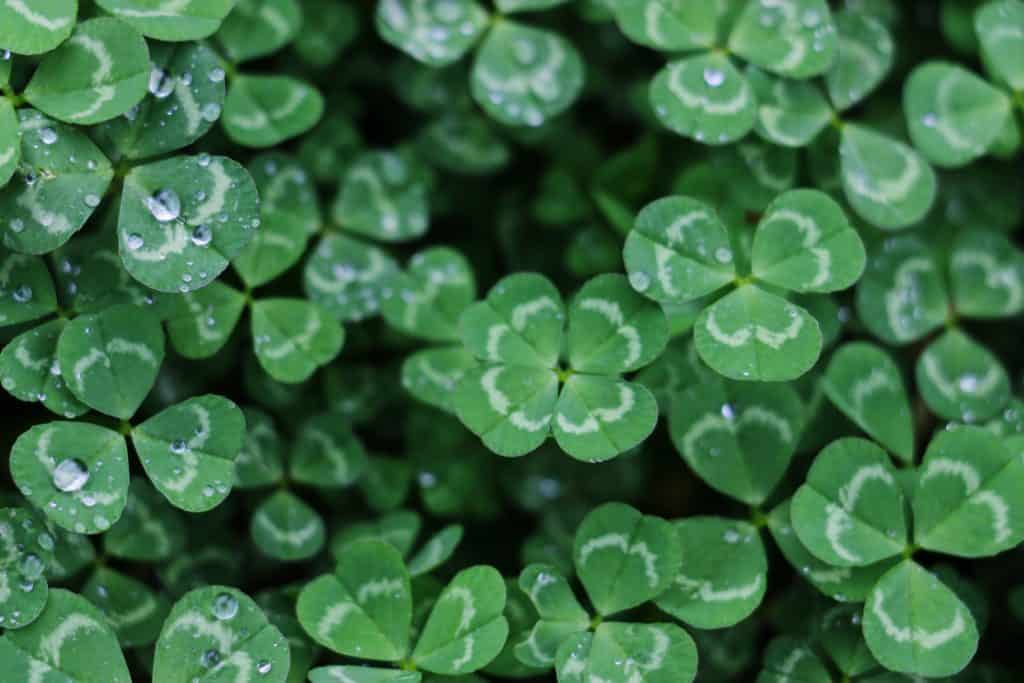
The shamrock, or clover, is one of the most iconic symbols of Ireland. The shamrock is a three-leafed clover that grows all around Ireland. What this little plant signifies can be divided into two different things.
The first thing associated with the Irish clover symbol is that some people believe a clover is very lucky. The reason behind this is that the Celts consider the number three to be a very magical one. In mythology, for example, there are triple gods and goddesses, such as the Morrigan, who are extremely powerful.
Therefore, with its three leaves, the shamrock is seen as a fortune teller, and Irish people like to keep it in their homes.
On the other hand, some people claim that the three leaves in the shamrock represent the Holy Trinity. They also claim that St. Patrick, the patron saint of Ireland, spread Christianity by using the shamrock.
A four-leaf clover is also considered lucky. This is because it is a rare mutation of the white-leaf clover plant, and the chances of finding it are said to be 1 in 10,000! Our dedicated blog lets you discover the reason behind the Irish’s luck. As the old Irish proverb goes, ‘An rud is annamh is iontach’—rare things are beautiful!
Did you know? It is an Irish tradition to wear shamrock on Saint Patrick’s Day.
Irish Harp – Symbols of Ireland
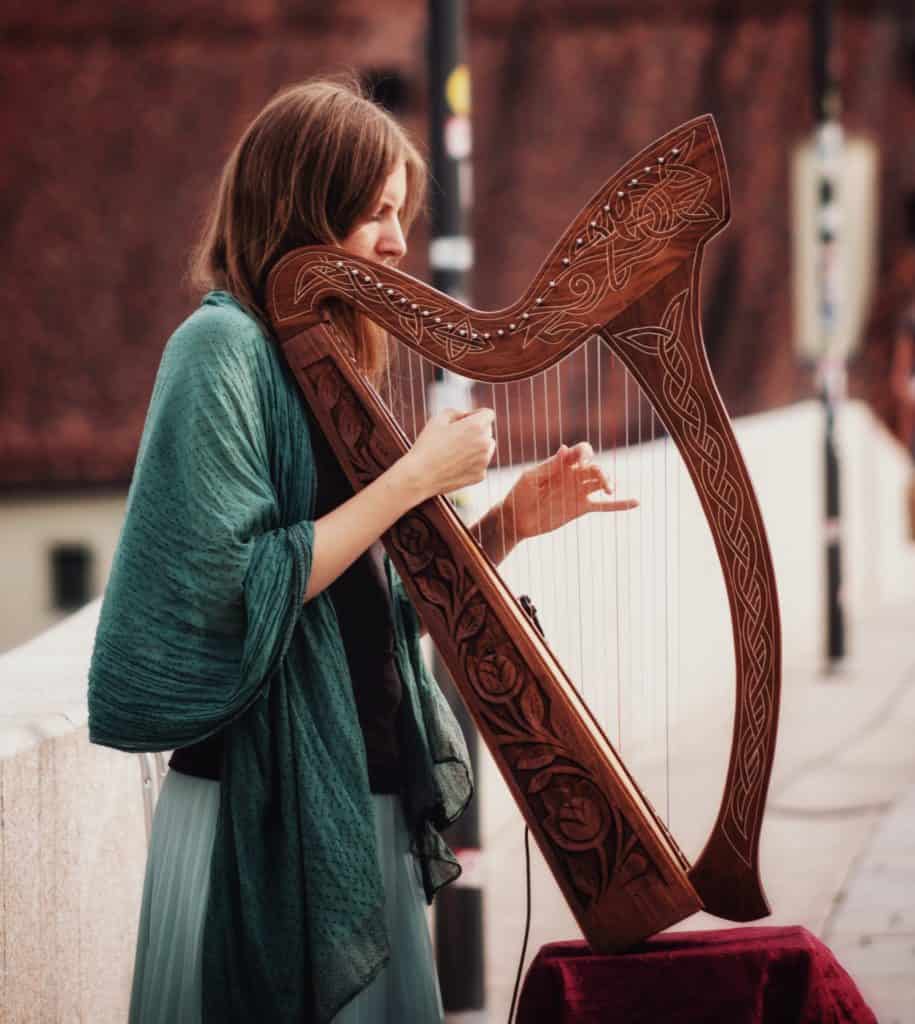
If you are unfamiliar with the harp, it may be easy to overlook it as a symbol of Ireland, but its significance as an Irish symbol is up there with the shamrock! Music was highly integrated into the culture of the Celts. They loved music and art and expressed that through the festivals they held every year.
Even the Celtic pantheon of Gods, the Tuatha de Danann, were skilled in and valued one’s musical ability. The Celts saw magic, intelligence, proficiency in the arts, and strength as necessary skills for any champion of the Gods.
While music is a spoken language worldwide, the Irish have musical instruments and styles. Some instruments, including the Irish harp and the Bodhran drum, are symbols of Ireland.
Although both relate to Irish culture, the Bodhran Drum is not often portrayed as a symbol of Ireland. However, the Irish Harp is one of the most famous symbols of Ireland. People also call it the Gaelic Harp or the Celtic Harp.
It’s not limited to Ireland, for it’s also popular in Scotland, where people call it the clàrsach.
What does the Irish Harp symbolise? During the Gaelic times, the Irish people loved entertaining their guests. They did so by using their harp to play some excellent rhythmic music. In the 8th century, Benedictine monks wrote documents in which the harp was featured, again highlighting its importance in Ireland.
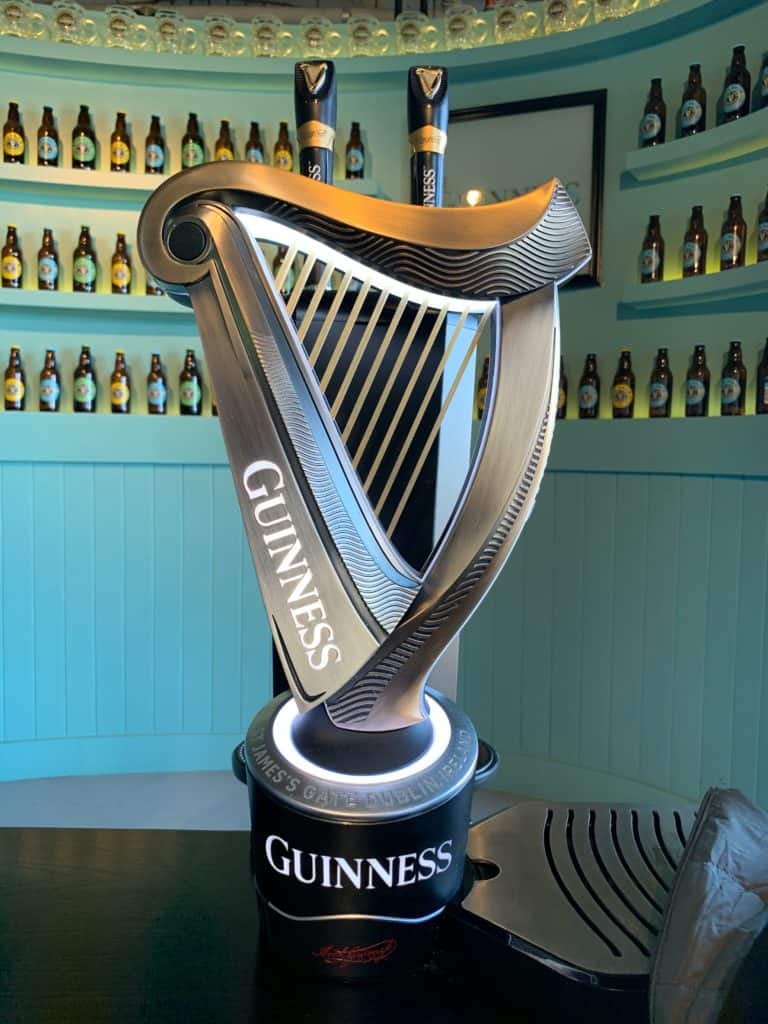
More signs include the harp being featured on coins used during the 1500s. Even the currency used in the Republic of Ireland today (Euros) features the harp. All Irish Euro coins feature the same iconic harp design.
Additionally, before the tricolour, the harp was used in the design of the flag of Ireland as far back as 1642. From the 18th to the 19th centuries, the harp became part of the national flag of Ireland; it was even featured in the Irish Rebellion of 1798. This flag had a green background and a golden/yellow harp. It was only in 1916 that the tricolour replaced the original flag.
As you can tell, the Irish Harp became and still is a significant symbol of Ireland. Even the Guinness logo is a harp!
Claddagh Ring – Symbols of Ireland
The Claddagh Ring is one of the most romantic symbols of Ireland. It consists of a crowned heart that is held by two hands. The ring is often exchanged between couples as a promise ring and is one of many eccentric Irish wedding traditions.
The hands on a Claddagh Ring represent the couple’s friendship, the heart represents their love, and the crown represents their loyalty.
Although the rings are associated with romantic partners, you can also receive them as a gift from a friend or loved one. It can also be used as either a wedding or engagement ring. Claddagh rings are frequently inherited; mothers often hand them to their daughters.
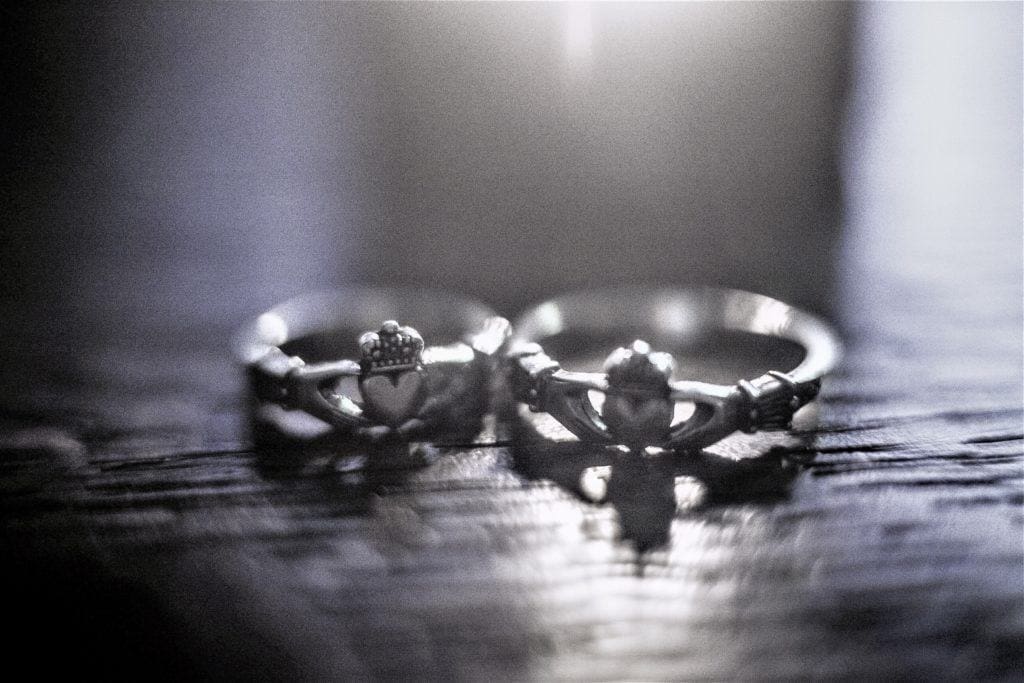
The Claddagh symbol can also be found on other jewellery pieces, such as bracelets, necklaces, and earrings.
Men or women can wear Claddagh Rings, and you can even buy one for yourself. One thing worth noting is how you wear the ring, which can tell people about your relationship status.
According to tradition, there are four ways to wear the ring, one of which is telling people about your relationship status.
The wearer is single and looking for love if the Claddagh Ring is worn on the right ring finger with the heart pointing out. If worn on the right ring finger facing in, the wearer is in a committed relationship.
If you are engaged, the Claddagh Ring is worn on your left ring finger, facing outward. If you are married, the ring remains on your left hand but is turned so the heart faces inwards or ‘closed’.
Why is it called the Claddagh Ring?
The ring is named after the little fishing village in Claddagh, where Richard Joyce is believed to have first created it. The Irish word Claddagh translates to ‘rocky shore’. The small village is within walking distance from Galway’s city centre (2km) and is beside the city’s museum (850m).
It is a beautiful and picturesque location to explore. If you’re ever visiting Galway, make sure to check it out!
The Origins and Irish Symbolism of the Claddagh Ring
All of the customs we practice today originally began somewhere in the past. This applies to all of the symbols of Ireland, including the Claddagh Ring. The origin of this tradition is shrouded with mystery; people are not sure how the customs they are carrying out nowadays originated.
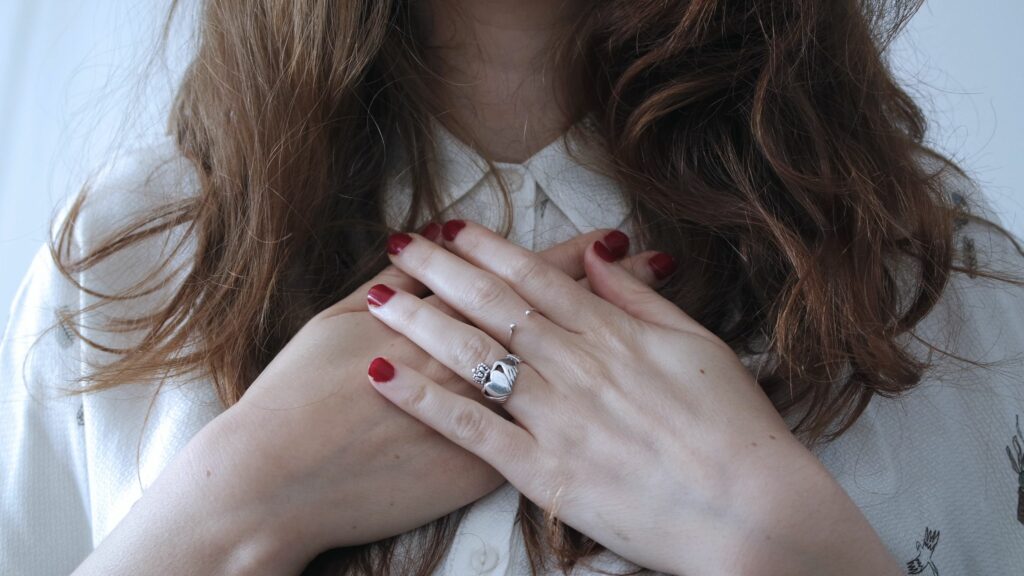
However, two stories tell us about the creation of the Claddagh Ring and why it became one of Ireland’s most prominent symbols. Both of these legends feature different members of the Joyce family.
The Slavery of Richard Joyce
Galway is a county in the West of Ireland that is popular for being a famous fishing village. Many centuries ago, a group of the most influential people who lived there were known as the 14 Tribes of Galway, which included members of the Joyce family. One of the most famous figures of the Joyce family was Richard.
One day, when sailing from Galway to the West Indies, Richard was captured by Algerian pirates and sold into slavery. Richard’s master was a goldsmith. He remained under his mentorship for 14 years, becoming an expert craftsman.
1689, William III of England released all British subjects, and Richard was finally free. His master goldsmith was sad to see him leave; he tried to convince Richard to stay by offering half his wealth and his daughter’s hand in marriage, but Richard refused.
On his way back home to Galway, Richard learned that his one true love was still waiting for him. Thus, he created the Claddagh Ring to offer to her as a marriage gift. He married his beloved and led a healthy and happy life as a successful goldsmith, with his wife wearing the first-ever Claddagh ring.
To this day, Claddagh Rings is an Irish symbol of love from ancient times. You can see the earliest surviving Claddagh Rings at Galway City Museum. They are marked with Joyce’s initials, which is why many believe he created the custom. While it can’t be proved 100%, the historical timeline can be supported.
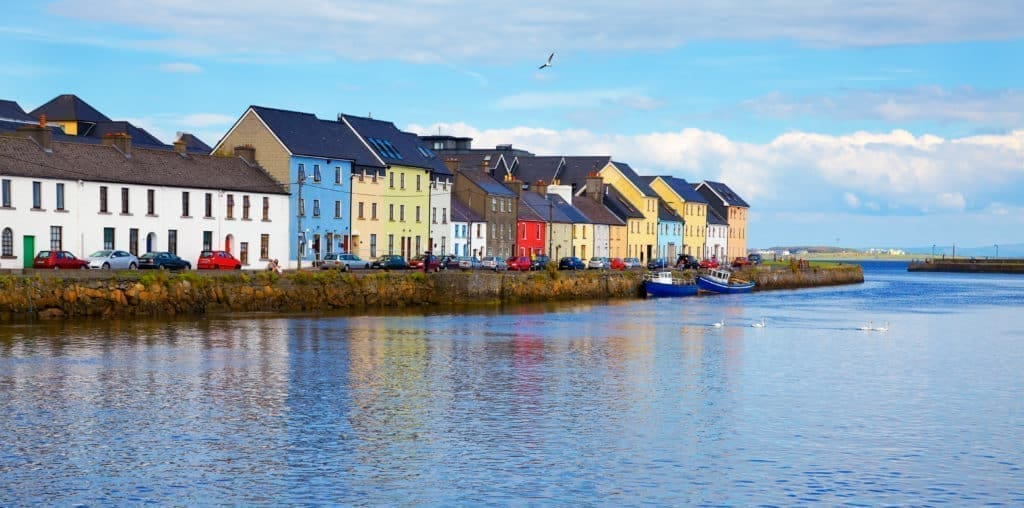
An Eagle Dropped the Very First Claddagh Ring
Another theory about the origin of the Claddagh ring is a bit more far-fetched. Have you read the title of the story? Well, that is pretty much all of it!
This time, the story concerns Margaret Joyce. She was commonly known as Margaret of the Bridges because she built the bridges of Connacht. She funded their construction by using her substantial inheritance from her first marriage to a wealthy Spanish merchant.
This story started when she married the mayor of Galway, Oliver Ogffrench, in 1596. On an ordinary day, an eagle flew over Margaret’s head and dropped a ring into her lap. It was the very first Claddagh Ring. Margaret believed it was a gift from heaven. That was how the Claddagh ring became one of the most recognised symbols of Ireland.
Which story do you prefer? Both are interesting!
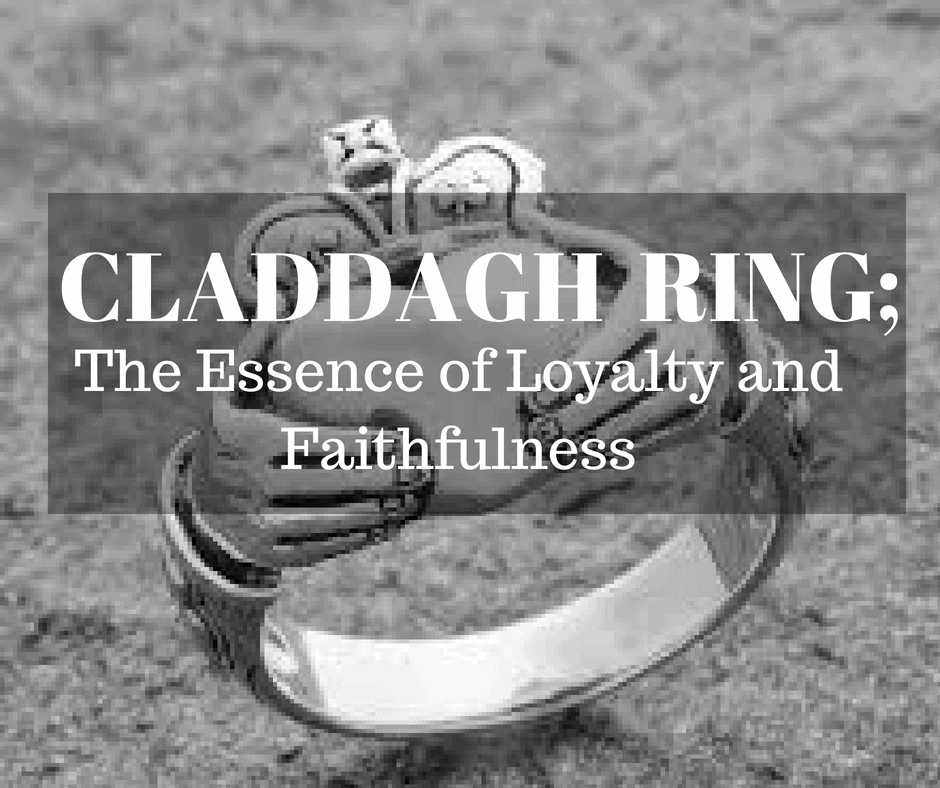
The Celtic Cross – Symbols of Ireland
The Celtic cross is instantly recognisable for its beautiful and intricate design. It is one of the main symbols of Ireland and Scotland and can be seen across hundreds of cemeteries in both countries. It also extends to different places around the United Kingdom, including England and Wales.
We cannot quite confirm where these unique crosses originated. Competing tales describe different origins of the tradition we observe today. One popular theory claims that St. Patrick introduced this Celtic cross to Ireland and converted many people from Paganism to Christianity.
The circle represents the sun, which pagans worshipped. Adding it to the cross was Saint Patrick’s way of showing that Christianity would incorporate their culture instead of destroying it. Celtic Christianity existed in Ireland, which preserved some Celtic customs, festivals, and traditions before a more traditional form of Christianity overtook it.
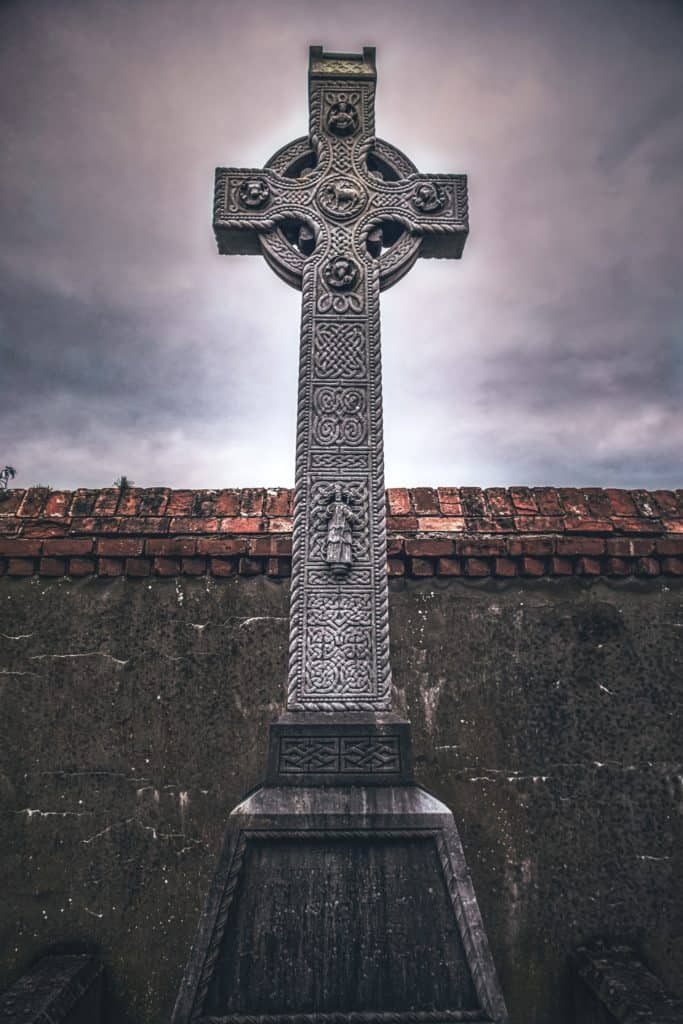
However, different groups of people believe those sources that claim otherwise. These sources profess that this cross was introduced by either St. Declan or St. Columba.
The difference between the Celtic cross and the ordinary one is the circle intersecting the stem and arms. Although many believe it represents the sun, this may not be true. Such are the joys of Celtic traditions!
Many aspects of Celtic life were only written down centuries after Christianity arrived in Ireland, and some things were not recorded at all, so early Irish history can be a bit murky at times.
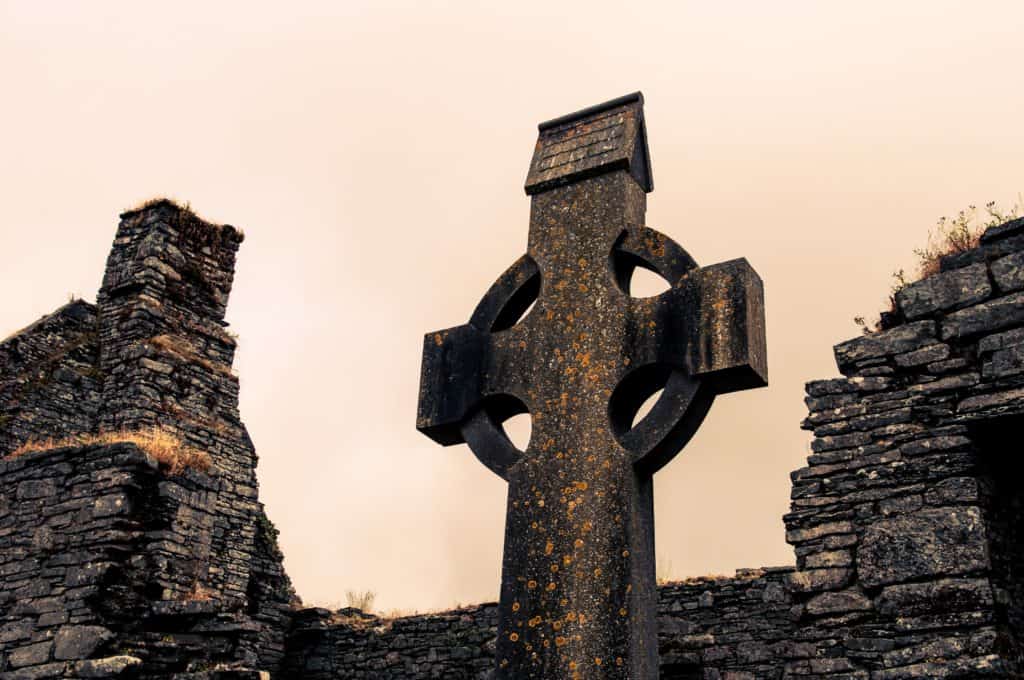
The Celtic Tree of Life – Symbols of Ireland
The Celtic Tree of Life is another recognisable icon among Ireland’s symbols. It is often seen on different types of decorations, including tapestries. The Celtic Tree is believed to have been the symbol of harmony and balance to the Celts of ancient times.
They believed trees were man’s ancestors and were the gateway to the Otherworld or afterlife. The Celts have always appreciated the existence of trees, which played a part in shaping their culture and beliefs. The Celts also believed in the power of Fairy Trees and respected them greatly.
Fairy trees are usually found alone in a field and are believed to be the property of the fairies or fey. Fairie Trees were feared centuries later because of their mysterious origins, but evidence suggests the Celts created the traditions and Irish symbolism around the magical trees.
In ancient times, people called trees ‘Crann Bethadh‘, the tree of life. They embraced the belief that trees held magical powers. Thus, they honoured the presence of trees in the world by leaving big ones in the middle of the fields they had cleared for farming.
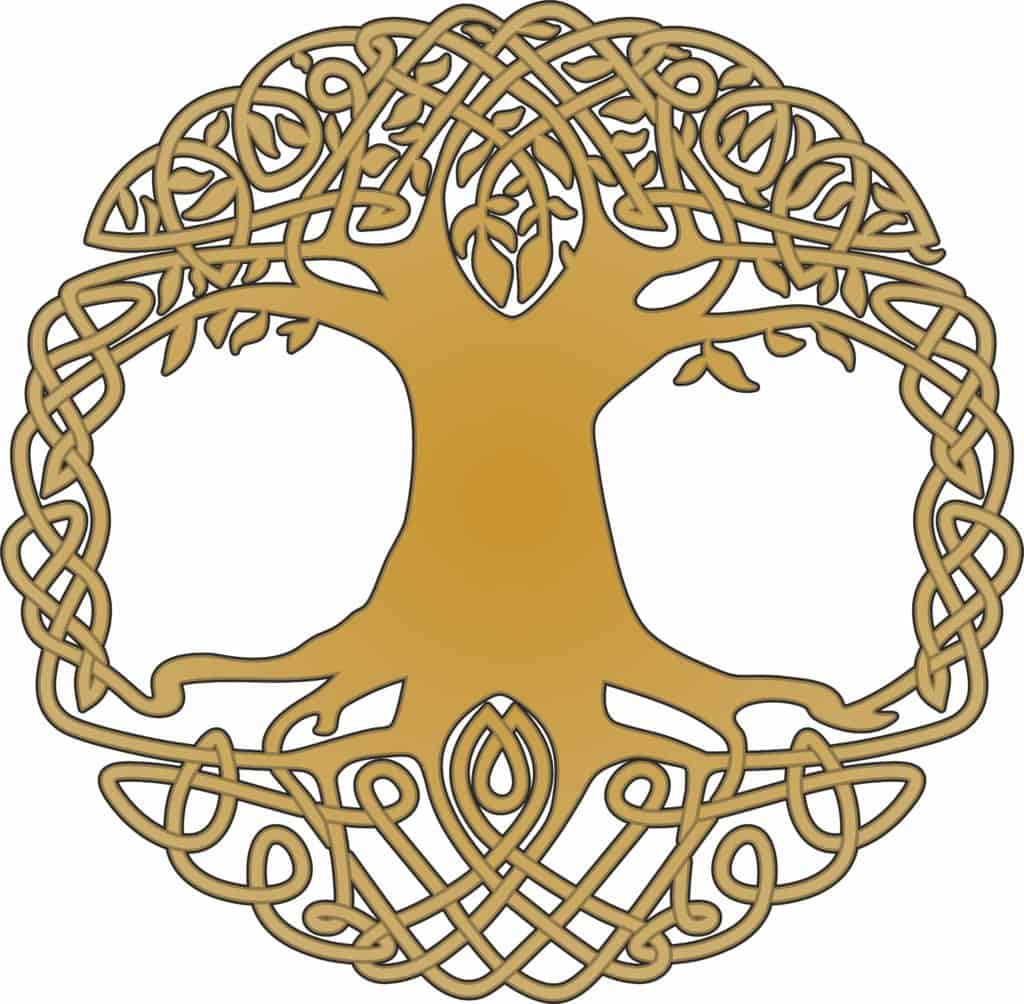
They believed that trees’ powers in healing and providing food and shelter benefitted human beings and other creatures of nature, including animals and insects. The ancient Celts were keen on keeping their trees alive, as they were an excellent providence for all life.
The Celts also considered chopping trees down as a severe crime. People used to get back at their enemies by cutting their trees down. It was a sign of great victory and disrespect to destroy someone else’s tree.
What Do Trees Represent as Symbols of Ireland?
Trees, in general, have always been of great significance to the Celts. It was customary for them to become among the most prominent symbols of Ireland. According to Celtic traditions, the Tree of Life represents the forces of nature.
It depicts how nature’s forces intermingle to create harmony and balance. The legend also tells us that the combination of numerous trees results in a tremendous forest or that there is strength in numbers.
Trees have big branches and grow tall, similar to how nature’s forces are widespread and intense. Trees also combine their life forces to provide homes for countless species. The cycles of life are balanced, and the Celtic Tree of Life symbolises these ideas.
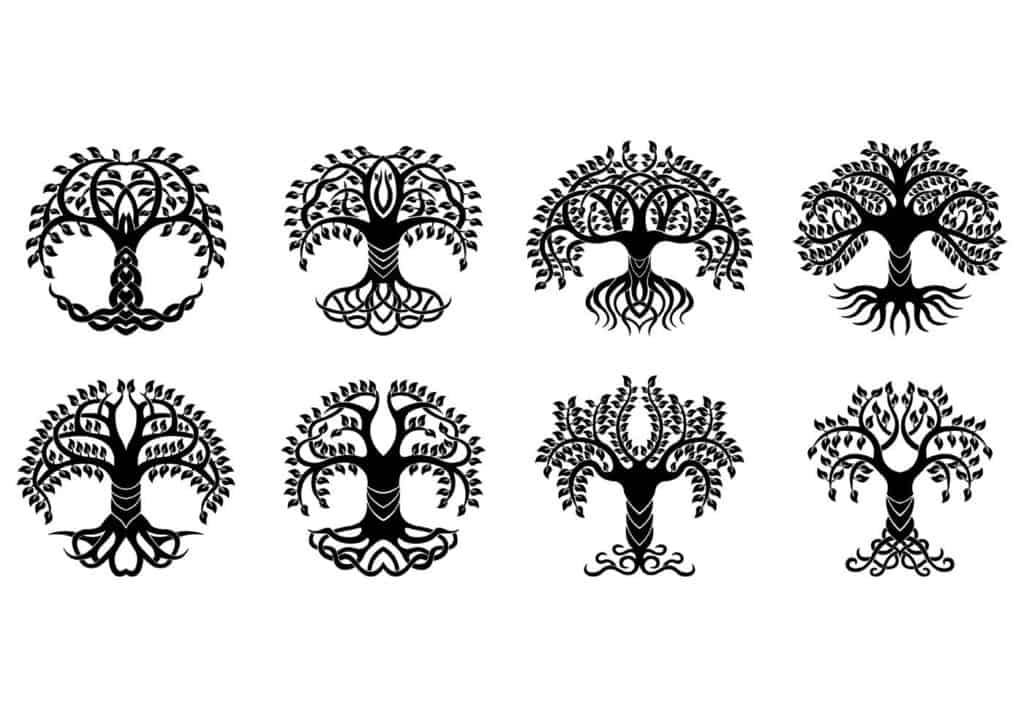
One more thing that the tree symbolised for the Celts was resurrection. This is because the leaves fall during autumn only to regrow in the following spring. They hibernate during winter and return to life when spring and the sun is up.
In some areas around Ireland, people believed trees were doorways into the spirit world. They thought the trees guarded our lands and separated us from the Otherworld. The ancient folks felt the tree’s roots connect us with the lower or other worlds as they grow far down.
Practices and Traditions Around the Trees – Irish Symbols
The ancient Celtic people gathered around trees, believing in their superpowers and magic. Reading tales of Irish mythology reveals that trees have appeared in several legends and myths.
Moreover, there are practices in the Irish culture that are traditionally linked to the presence of trees. One example of those practices is the Irish blessings. They are like any other blessing known in different religions: you pray to god, asking for aid and good health. However, Irish blessings are not mono-theistic. They date back to the pagan era.
People gather around the trees and tie clooties to the branches after dampening them in the nearby well’s water. Such trees are often called May Bushes, Wishing Trees, Fairy Trees, or Hawthorns.
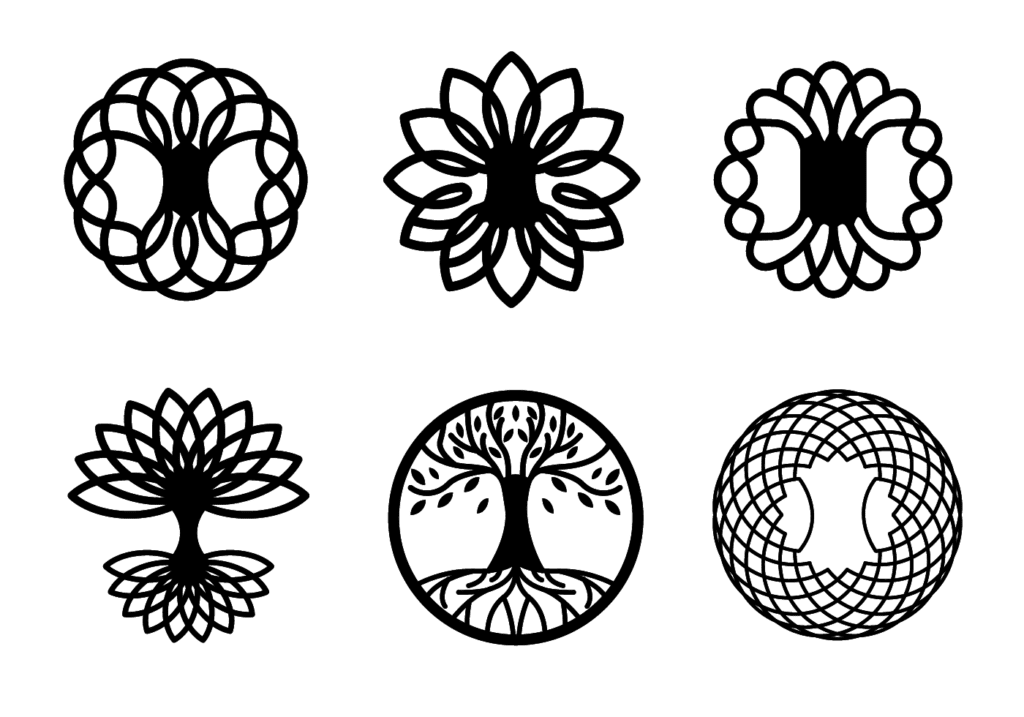
Another practice in Irish symbolism is Celtic Knots, which are closely related to the Irish symbols of trees. The fascinating thing about Celtic Knots is that knowing where they begin or end is brutal. These seemingly endless knots represent the aspect of eternity, similar to how trees in nature do.
More precisely, ceaseless knots refer to the eternity of nature and its forces. The ancient Celtic people used these symbols of Ireland to demonstrate their belief in the continuous life cycle where everything is woven together. Celtic Knots and trees are often seen in designs for different art forms, including tattoos.
The Trinity Knot (Triquetra) – Irish symbols
The Trinity Knot is one of Ireland’s most beautiful symbols. It is widespread across almost all Celtic cultures, but its significance differs within each culture.
People also refer to the Trinity Knot as the Triquetra, and churches throughout Ireland use it to represent the Holy Trinity. The term Triquetra originates from the Latin language and means “three-cornered.”
This translation defines the symbol’s design as it consists of three corners. Sometimes, the Trinity Knot also includes a circle in the middle.
One significant aspect of this magnificent symbol of Ireland is its versatility. Different religions and cultures use this symbol with different significance. Although the Trinity Knot has been adopted worldwide, it is still believed to be one of Ireland’s most essential and well-known symbols.
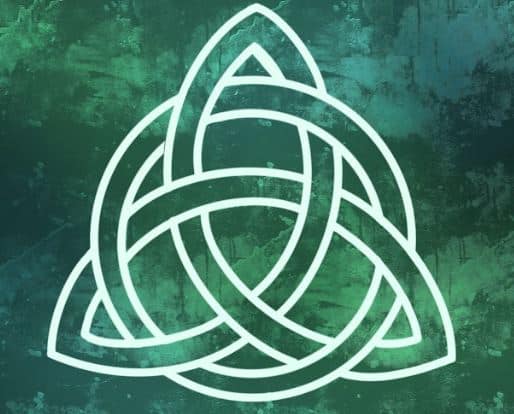
The Celts generally honoured the number three and believed it to be magical. This has already been illustrated with the Irish clover symbol. It goes back to their belief that the world came in three main domains: sea, sky, and earth.
The Trinity knot is used in several modern-day things. It has appeared in more than a few T.V. shows, including Charmed. The series featured three witches (yes, three, again), and their “Book of Shadows” had this symbol on it to signify the power of unity.
People often use this symbol as a Celtic tattoo idea as it is aesthetically pleasing, mainly descendants of Irish immigrants in the United States.
Different Meanings of Trinity Knots as Symbols of Ireland
While many may agree that the number three represents something powerful to the Celts, they do not always agree on what it symbolises. Many documents claim different things regarding the origin of the Trinity Knot.
One assumption is that it is probably related to the solar and lunar phases. During some excavations, the Trinity Knot was seen alongside lunar and solar symbols, which led some to believe that the Irish symbols were related during ancient times.
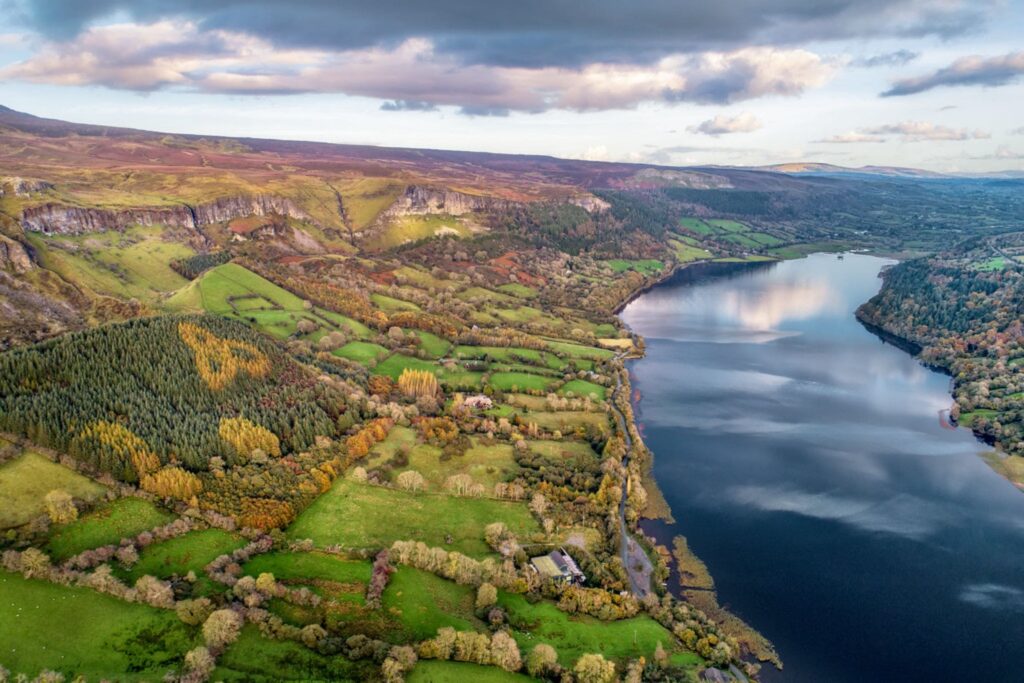
But then again, Christians seemed to have a different opinion. The Christian faith claims the Holy Trinity includes the Father, Son, and Holy Spirit. Thus, they applied the same belief to the knot that, coincidently, features three corners.
Many Christians believe the symbol was brought with the monks who came to Ireland to convert the Celts to Christianity. However, historians believe the Trinity Knot dates back earlier than the Christian era.
The Neopagans and the Wiccans also had different views on the Irish symbolism of the Trinity Knot. They regarded the Trinity Knot as a symbol of their Goddess’ threefold nature. This nature included mother, maiden and crone, representing creation, innocence, and wisdom.
They also believe that the knot represents the earth, water, and fire and that the circle in the centre represents female fertility. In Irish mythology, some triple goddesses are usually sisters, namely the Morrigan.
Triskelion – The Irish Symbolism of the Triple Spiral
You may have already realised that there are numerous symbols of Ireland. Each of the Irish symbols represents valuable meanings to different people. Our next symbol is called the Triskelion or the Celtic Triskele.
Triskele is a Greek word that means ‘Three Legs”. Once again, we can see the repeated significance of the number three in Irish symbolism. Some people also refer to the Triskelion as the Triple Spiral, as it seems to be made up of three separated twirls.
Historians claim that the Irish symbols of the Triskelions date back to the Neolithic or the Irish Megalithic era. Many of these symbols are at the entrance of the Newgrange tomb in Ireland. Despite its archaic appearance, Newgrange only gained popularity in 500 B.C. in Ireland.

The Significance of the Triskele – Symbols of Ireland
While the Triskele does not seem complicated, it’s difficult to illustrate its meaning. The basic meaning of the magical number three for the Celts remains consistent with this symbol. Just like the ancient Trinity Knot, the Triskele has many different interpretations.
Some scholars also believe that the Triskele is the most complex of all the Irish symbols because of its mysterious origin. It holds a variety of possibilities, but that doesn’t make it any less valuable. We can even see the Irish use it in modern-day jewellery and tattoos.
One of the most popular meanings that the Triskele may represent is motion. Sounds a bit weird, right? The three arms of the spiral lie in positions that make the symbol seem to move outwards. They seem to move away from the centre, representing motion and signifying the power of energy. It can imply the significance of progress and evolution.
Another source claims that the spirals represent the three Celtic worlds. Yes, the Celts used to believe in the existence of more than just our world. As discussed previously, they thought that trees were the doorways to the underworld. The three worlds that Celts believed in were the present world, the spiritual world or afterlife, and the Otherworld.
The Green Man – Symbols of Ireland
While reading about Irish mythology, you may come across the Green Man figure. Not only is he a prominent character and deity in Celtic mythology, but he is also deemed one of the most fascinating symbols of Ireland. His depiction usually involves his face being covered in leaves and branches.
Some images of the Green Man also feature fruits and flowers sprouting from the man’s face. In rare cases, you may see a full figure rather than just the head. But, people commonly know the Irish symbol as just the face of Cerunnos.
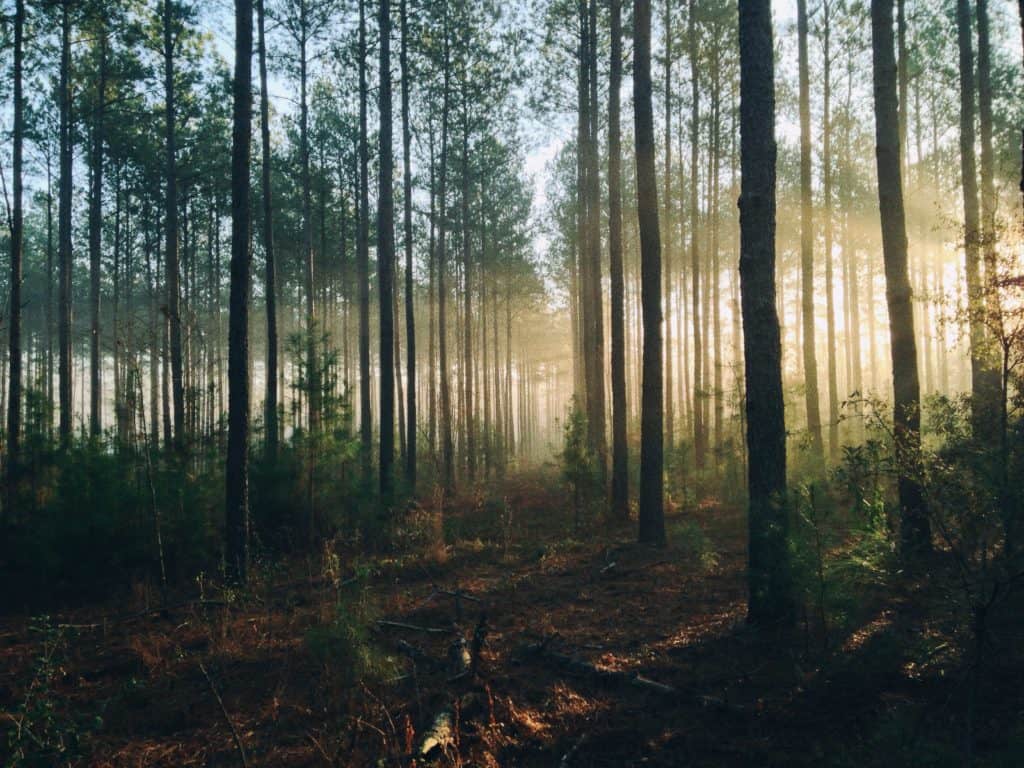
The green colour of this Irish symbol represents the natural vegetation process. The Green Man is usually identified with the Vegetative deities. According to Celtic mythology, Cerunnos is called the Green Man, for he was the god of the Forest. He also represents the aspect of resurrection and the growth cycle of plants.
The Rituals of Honouring the Green Man
Like the symbols of Ireland, the number of Celtic Gods is also countless. Each of them was worshipped in a specific way. In other words, worshipping gods depended on what they used to represent.
Let’s take Cernunnos as an example. As the god of the forest, people worshipped him in ancient Ireland around the woods.
Most of the worshipping of Celtic gods included offerings related to the deity’s identity. Folks who worshipped the Green Man made their offerings in the forests. Celts went to the forest carrying a goblet in which they poured holy water or milk. In some cases, they added wine to the goblet, too.
Once those requirements were ready, people started calling for the Green Man whilst pouring the contents on the ground. Such an act meant you believed in the Green Man, called for him, and asked for his blessings. Yet, that was not the only way people used to call for this god.
The Green Man was both the Celtic God of the Hunt and the God of the Forest, meaning he protected people and animals. This is why the Celts were so respectful towards nature; Cernunnos warned humans only to kill what they needed to survive. Being disrespectful or greedy would invoke his wrath.
St. Brigid’s Cross – Irish symbols
St. Brigid’s Cross is another prevalent symbol of Ireland. It is believed to bring good luck to the home, and you often see it over the entry doors of traditional Irish dwellings.
Brigid was the name of both a Celtic Deity of the Sun and Fire and a Christian Saint from Kildare. It is believed that the goddess inspired the saint’s stories, which involve many miracles. Whether the cross originated in Celtic worship or as part of Christianity is hard to know.
Many of Ireland’s symbols stem from cultural beliefs, while others emerged from tales of Gods. Here’s one example of a symbol of Ireland that bears a connection to a Goddess: the St. Brigid’s Cross. However, it is not that simple; St. Brigid’s Cross is also a Christian item in modern times.
This Goddess, in particular, has many symbols surrounding her. However, this one remains the most prominent of them all. Sometimes, people refer to the Irish symbol as the Imbolc Cross. That is because the Goddess’ holiday falls on the Imbolc festival, during which is when people started making her cross.
This Celtic practice of making St. Brigid’s Crosses continued into Christian worship as people still bless them at mass on St. Brigid’s Day today.
A Brief History of the Honoured Goddess
Before becoming one of Ireland’s most recognised symbols, Brigid or Brigit was a worshipped Celtic Deity. While it may be evident that Saint Brigid belongs to Christianity, the Goddess herself can be found in legends dating back to pagan times.
Brigid appeared in the mystical tales of the pagan eras as the Goddess of the Sun and Flame, the Hearth, and the Home. Her image usually included a beautiful woman with bustling red hair, symbolising the sun’s heat. Legends have it that she was born with a fire coming out of her, which explains the redness of her hair.
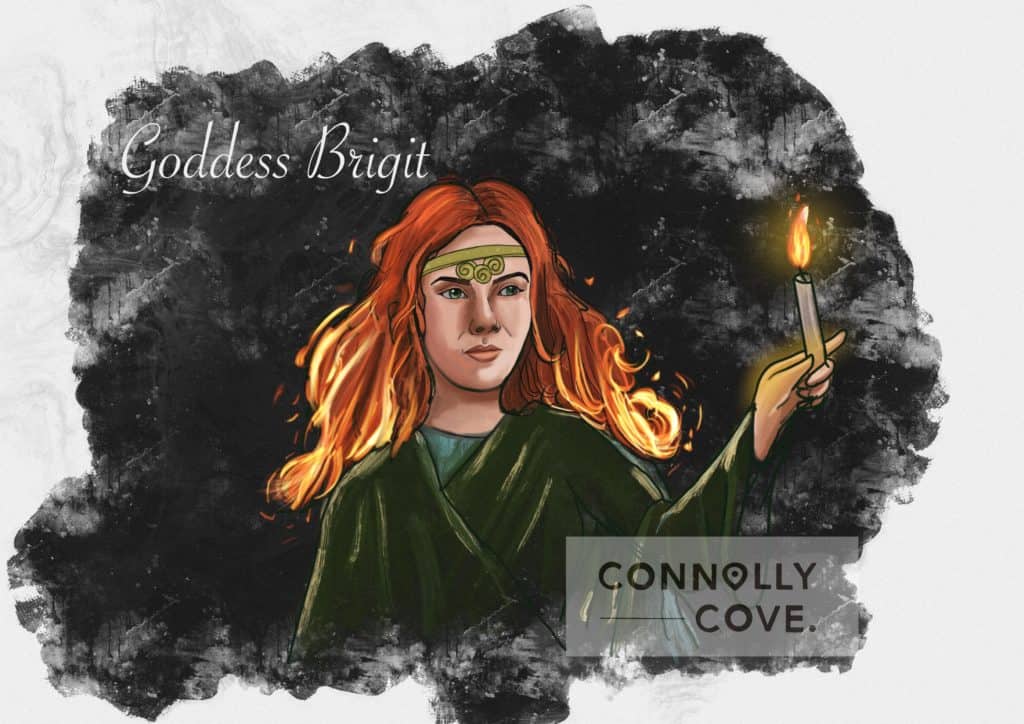
However, when Christianity expanded into the borders of Ireland, worshipping of the pagan gods was no longer accepted. People were not allowed to worship any deities outside the Christian religion. According to the tales, Goddess Brigid feared the new religion would cost her followers and worshippers. Thus, we see her in the tales written in the Christian times transforming herself into a Saint.
People are usually confused between the two versions of Brigid; however, some sources prove them to be the same. Another theory is that because of her immense popularity—even more so than other Celtic Gods—it was challenging to get people to stop worshipping her. So, an acceptable version of Brigid was adapted to the Christian faith. Maybe there is no correlation at all; such are the joys of Irish myth!
Irish folklore features many tales featuring the Goddess of the Sun, emphasising her significance in having power over our world. Given the Irish’s impulse to embrace those beliefs, it was anticipated that gods would become among the most important symbols of Ireland.
According to mythology, Brigid was the first person to keen in Ireland. This ancient type of mourning was like a musical, sorrowful lament and is just one of many Irish wake superstitions.
The Story Behind the Cross – Symbols of Ireland
Like any other tale in Celtic mythology, there are usually numerous competing versions of the origin of the Irish symbolism behind St. Brigid’s Cross. But this time, we are only concerned with the Christian version of the cross’s story.
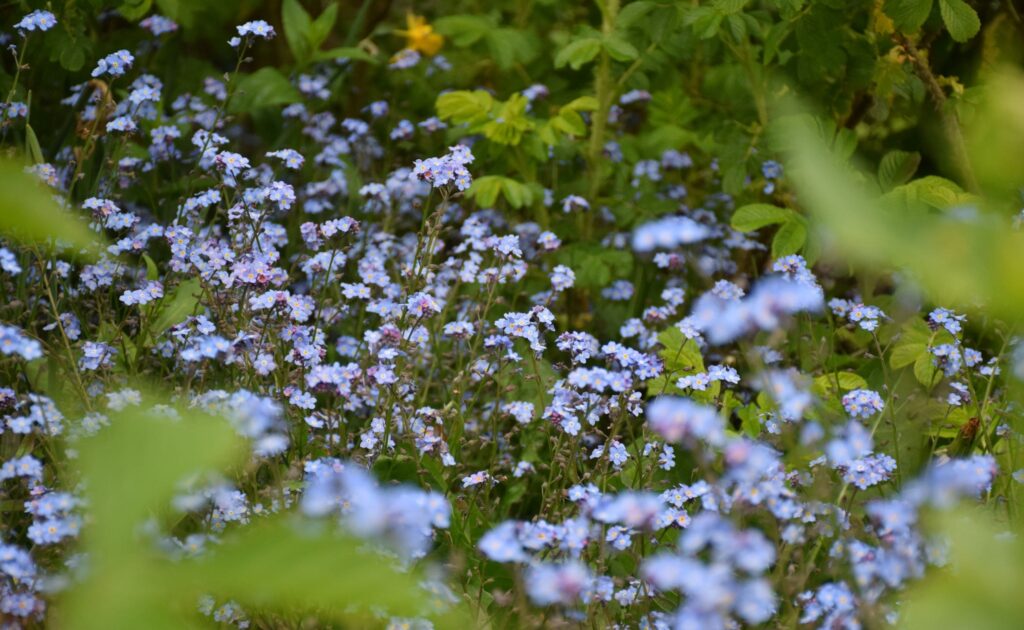
Legends claim that the cross was first made on the deathbed of a Pagan Lord. That lord was dying from his illness, and he asked his people to call for Saint Brigid before he was gone. When St. Brigid showed up, she started telling him the story of Christ as he had requested.
She sat next to his bed and started to make a cross out of the rushes on the floor. That action illustrated what the cross looked like and what the father, son, and holy trinity meant. It became one of the most prominent symbols of Ireland, and it lives on to this day. Before the lord died, he asked Brigid to baptise him.
Some other versions of the story claim that the dying man was Brigid’s father. They argue that she succeeded in baptising her father before he died. Afterwards, people started customising the cross on their own. It became part of the festivities of the Imbolc holiday for people to make crosses and place the Irish symbols in their homes.
Some people identify with the cross in Christianity, but others believe it’s a bit more archaic. That is because some pagans of today still use this symbol as an attribute to the Goddess and not the saint. Either way, making the cross is a fun activity that many Irish families and schools do on 1 February.
Awen of Three Rays of Light – Irish Symbolism
The Awen of Three Rays of Light is another symbol of Ireland with a simple design and profound meaning. According to many sources, it dates back to the 18th century. A Welsh Poet, Lolo Morgannwg, initiated the invention.
This Irish symbol has always signified inspiration, for the word “Awen” means inspiration in Welsh mythology. It was believed to inspire poets and creative people in general.
Awen sometimes translates into “essence” as well. You may find it confusing when you first glance at the Irish symbol. It consists of three dots above three rays that move upwards, usually enclosed in three concentric circles. This brings us back to a familiar and reoccurring point: the significance of number three in the Celtic culture and Irish symbolism.
This number is used in Irish symbols to represent our world’s realms: the land, sky, and sea. It could also mean the division of oneself, mind, body, and soul, or the three worlds. Those worlds include the Underworld, middle, and upper world.
Aside from representing the domains, some people also believe that the three rays demonstrate balance in the symbols of Ireland. They think the outer rays represent the energies of a male and a female, and the middle ray represents the balance between them.
Awen and its Solar Connections
The sun itself is a significant element in Irish symbolism and folklore. Some people believe that Awen has connections with the sun, hence the three rays that appear on the Irish symbol’s design. This concept professes that the Awen, the division of light rays, happens during the midsummer sunrise.
It’s when the sun casts three rays to open the Annwyn, the doorway to the Otherworld.
It’s believed that this Irish symbol goes way back to pagan times but was Christianised later. Some also claim that priestesses and druidesses commonly used the symbol. Thus, they profess that a female spirit invoked the sun’s energy.
A practice associated with the symbol included a cauldron belonging to the Tuatha de Dannan. The association was featured in a tale in which Gwion stole drops of inspiration. Thus, bards used to drink three drops of the cauldron as an attribute to Gwion.
Rainbows – Symbols of Ireland
Rainbows are one of the most famous symbols of Ireland. Yet, they are not as well recognised as other Irish symbols. That’s also because there has not been a lot of inclusion of the symbol throughout history. However, rainbows are pretty significant in the tales of the Leprechauns, one of the main symbols of Ireland.
Rainbows are used as Irish symbols of hope and goals within Celtic cultures. The origin of this belief goes back to, again, the Leprechauns. They are tiny elf-like creatures that were popular for being skilful and sly. Leprechauns loved money and worldly goods, so they sold people fake promises in exchange for their belongings.
It was commonly told in tales that leprechauns convinced people to track down the end of the rainbow. They promised them they would find hidden gold pots and other treasures there. In exchange, the humans would give the leprechauns whatever they wanted.
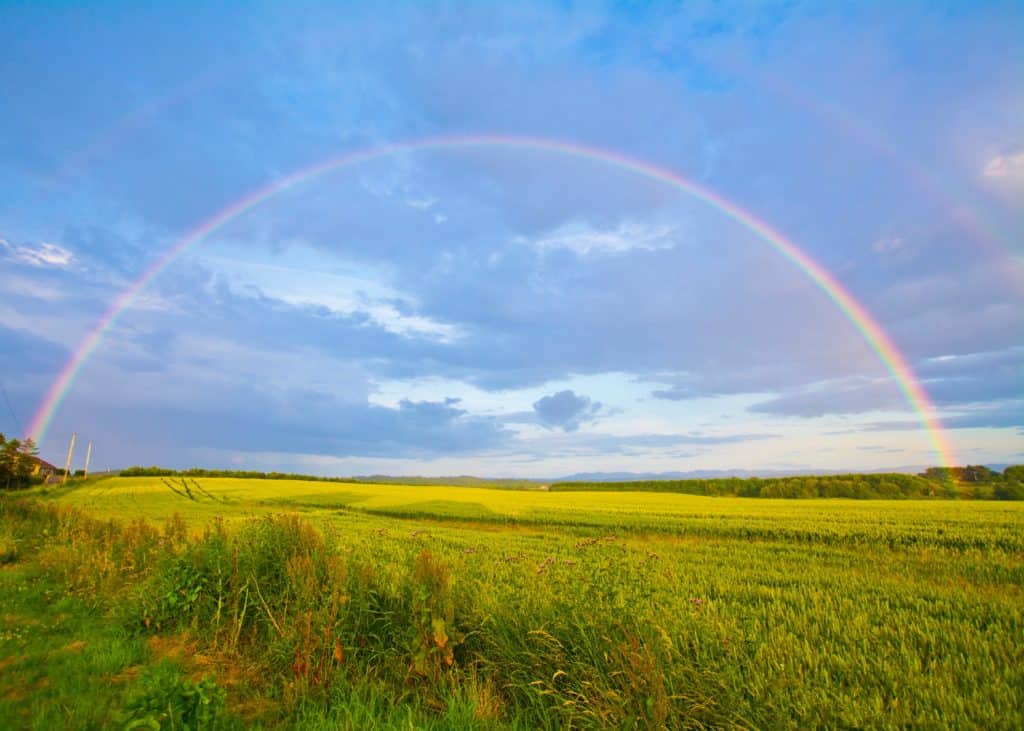
But wait. Do rainbows have an end? Well, not exactly. However, people still kept trying, hoping they would get there. That is the story of how rainbows became the symbols of Ireland and the goals of the Irish people. They signified the attempts to pursue your dreams and hopefully reach them someday.
It’s also worth noting that we get plenty of rain in Ireland, so seeing a rainbow on the Emerald Isle is common!
Merrows: Irish Symbols of Fairies
The Merrow is another exciting symbol of Ireland. They are also popular in Scottish culture. These creatures are the Irish mythology equivalent of other cultures’ mermaids and mermen. Even the world comes from two Irish words: Muir, which means the sea, and Oigh, which translates to maid.
While there were male merrows, the legends told of primarily females, who seduced the mortals with their beauty.
Unlike their female counterparts, mermen were rare and had hideous pig-like features. Moreover, they are all known to be members of the Sidhe, or the Irish fairy world. They lived on the lands found beneath the waves of the ocean. Many regions around Ireland regarded them as Irish symbols of death and doom.
While their names mean sea-maids, they look nothing like the standard mermaids known worldwide. They are human beings with distinct features that separate them from us, and they don’t possess tails like most mermaids.
Some images feature the Irish merrows, who looked quite like humans but had broader and flatter feet. They also had thin webs interlaced between their fingers. To travel through the ocean currents, they wore red feather capes.
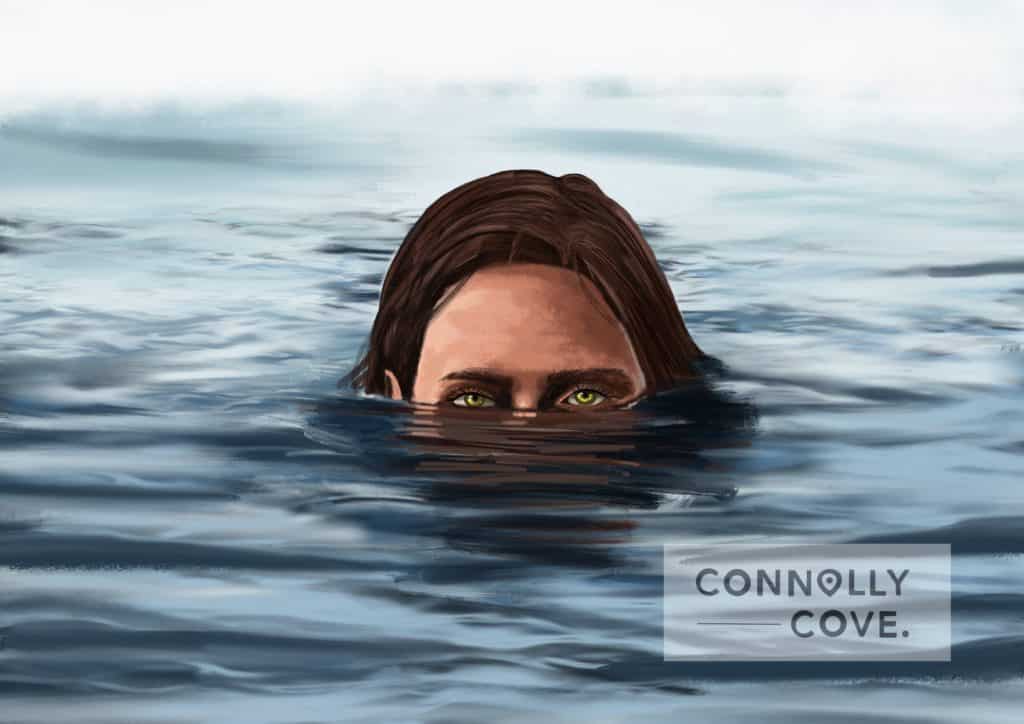
In other legends, some became a seal until they reached the shores. Selkies are also found in Celtic mythology, especially in Scotland and Ireland. Selkies are the name given to the creatures that could turn into seals underwater by wearing seal skin.
While some regions feared Merrows and Selkies, others believed they were beautiful. There have also been tales of mortals marrying these creatures, which explains why some Irish families claim to be descendants of the Merrows.
Intermarriage of Merrows and Mortals
When the merrow reaches a shore, she abandons her cape to walk on land. According to the tales, if a man finds her abandoned cape and hides it, she is forced to become his wife. They are considered symbols of wealth since they own the treasures from shipwrecks.
Later in the stories, the merrow usually finds their capes or cloaks. This urges them to return to the sea; thus, they return to their water world and abandon their human families.
Merrows in Other Cultures
Again, modern cultures perceive mermaids as creatures with an upper human body and fishtails. We are unsure where this portrayal of a mermaid first originated, but such an appearance was not among the symbols of Ireland.
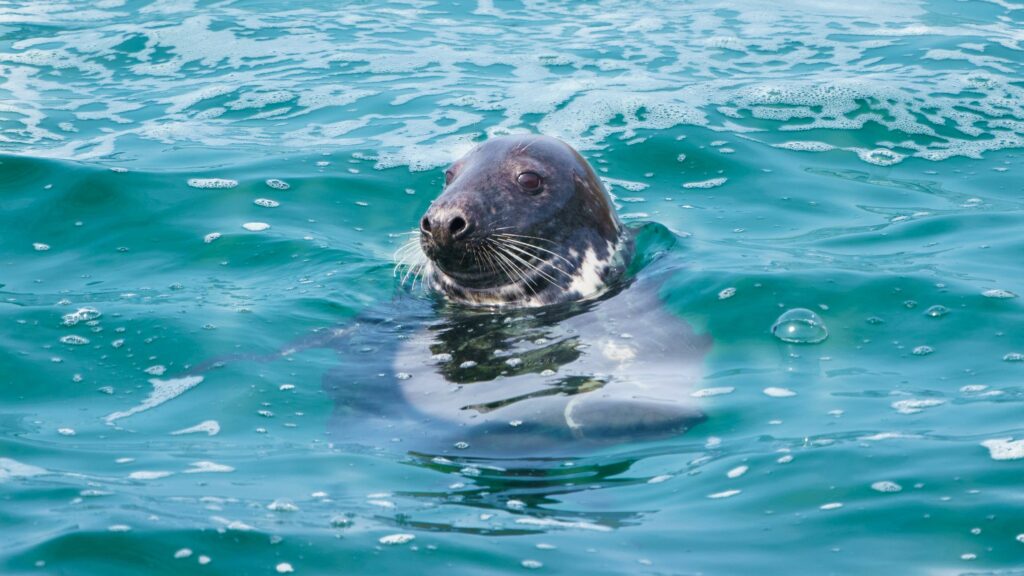
Irish mermaids look and behave significantly differently from those of other cultures. They are nearly inseparable from human beings, travelling through the ocean with a cape. The appearance of the cape differs from one region to another. Some believe the cape is red and made from feathers, while others believe it to be a seal-skin cloak.
As we have mentioned, Merrows are believed to be shapeshifters called selkies in Scottish cultures. They are human beings who can shed their skin and turn into seals.
Leprechauns – Symbols of Ireland
Leprechauns are a popular legend worldwide and remain one of the most prominent symbols of Ireland. The little fairy-like creatures first debuted in Gaelic folklore, making them popular in Ireland and Scotland.
As we previously mentioned, Leprechauns are famous for having pots of gold. They usually tell their captors to find these pots by tracking down the rainbow’s end. The legend of the leprechauns led to the rainbows being among the most important symbols of Ireland.
Their depiction is usually that of a bearded dwarf in a green costume. This is another reason why green is seen as a symbol of Ireland. More characteristics of the Leprechauns include their love of music and dancing.
They are also famous for being the world’s best shoe menders. They can be pretty fun sometimes, as they love performing all types of pranks. However, that does not change their sly nature, which they are famous for.
Leprechauns are Irish Fairies and Symbols of Ireland
Have we mentioned that leprechauns are capable of granting wishes? Well, they are part of the type of fairies that belonged to the Tuatha de Danann before becoming the Sidhe. However, they only became famous after being sent to the Underworld.
Nonetheless, they aren’t typical fairies; they don’t have pixie dust or wings. They are the ones who enjoy causing damage and engaging in destructive behaviours. Even their story in folklore states that they were exiled for their unforgivable deeds.
According to legend, the latter had to grant three wishes if a human could capture a Leprechaun. After those wishes were granted, the Leprechaun was free to go. Given that it’s tough to catch one, only a few tales surround the leprechaun.
But, even if a Leprechaun was caught, they usually managed to flee using their deceptive skills.
Why are the Leprechauns Popular Symbols of Ireland?
Those little-bodied fairies became associated as symbols of Ireland because of their popularity in folklore. However, the origin of the Leprechauns is quite confusing as they were found in multiple folklore sources. Despite the many sources Leprechauns appeared in, they became famous around Ireland and Scotland.
Even the world associates the Leprechauns with an Irish and Celtic cultural symbol. The earliest Leprechaun story that the world knows is “Adventure of Fergus“. It’s a medieval tale that is quite popular in Irish mythology. Thus, that is how the Leprechauns are thought to have become associated with the symbols of Ireland.
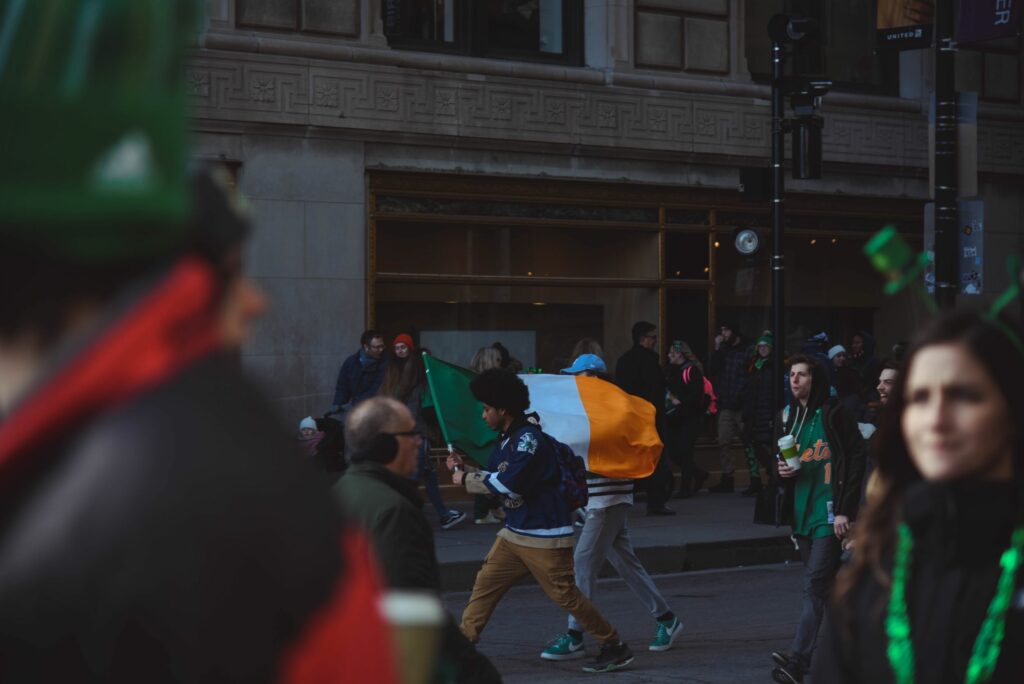
The popularity of the Leprechauns has increased with the celebration of Saint Patrick’s Day. While there is no apparent connection between them, people associate them together. St. Patrick’s Day falls on 17 March, and on this Irish national holiday, people celebrate for religious and cultural purposes.
They celebrate Ireland’s heritage by wearing green clothes and accessories, which is why the Leprechauns participate in the day. In the 20th century, it was the first time people were suggested to wear green on the St. Patrick’s Day holiday. It was probably because the colour was commonly found in many parts of Irish folklore.
As a result, we see the three Irish symbols—leprechauns, Shamrocks, and St. Patrick’s Day—as intertwined.
Facts about Leprechauns – Irish symbols
We have gathered some facts about Leprechauns so you can learn more about the tiny-bodied creatures. They are fascinating and one of the most thought-provoking legends in Irish folklore.
- Irish Leprechauns are only depicted as males. The reason behind their one-gendered portrayal is unknown, but they are confirmed to be unwanted or lone fairies. This has nothing to do with their gender but instead with their unfriendly nature.
- Some sources claim that the Irish Leprechauns were originally gods. We have already mentioned that they descend from the Tuatha de Danann. It’s said that they specifically derive from the god of the Sun, Lugh. When Christianity arrived in Ireland, worshipping the pagan Gods started to dwindle. According to legend, Lugh downgraded his status to a shoemaker when he was no longer worshipped, linking to the fact that Leprechauns are known to be skilful shoemakers.
- In real life, a disease linked to Leprechauns is Donohue Syndrome, sometimes called Leprechaunism. It’s a very rare genetic disorder in which the body experiences abnormal insulin resistance, which results in the formation of some elf-like features, like small hands and tiny bodies.
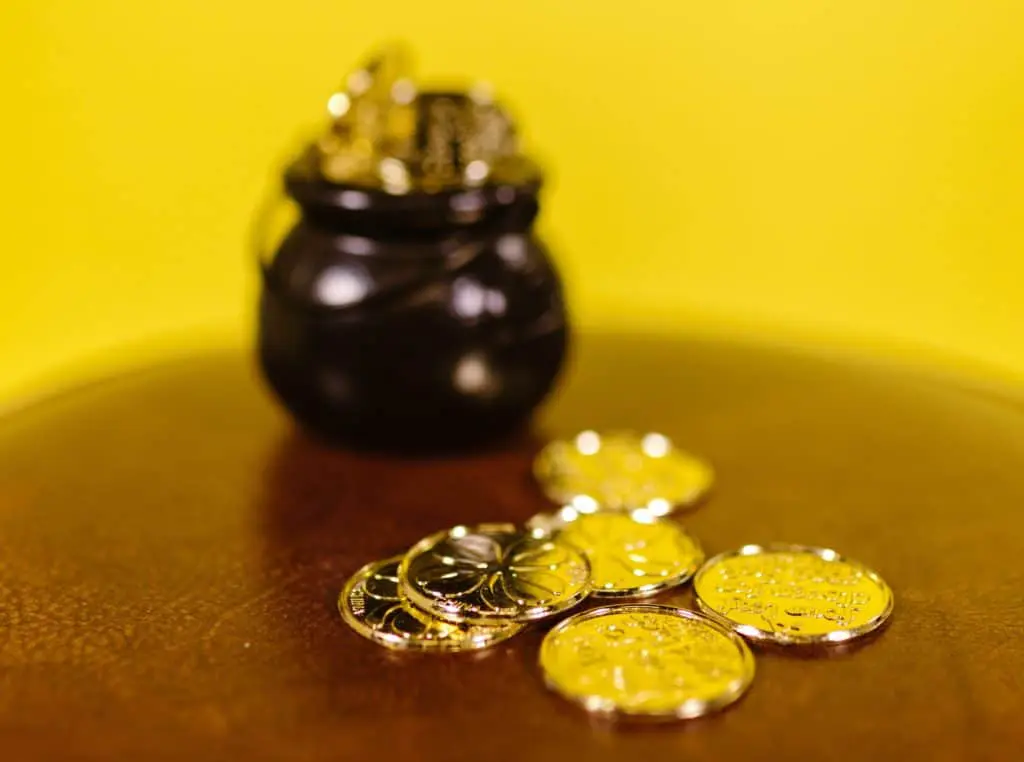
Grogoch – Another Irish symbol and Fairy
Grogochs are another fairy-like creature deemed to be one of the symbols of Ireland. However, they are not as popular as their counterpart, the Leprechauns. They are friendlier, more social and not as aloof as the Leprechauns.
One thing that both creatures share is that they are only males, as far as we know. No single tale has been documented that there has ever been a female Grogoch. The reason behind the Grogochs’ unpopularity compared to the Leprechauns might be that they were invisible.
The Grogochs are half-human, half-fairy creatures. They originally came from Scotland but settled in Ireland later, which led to them becoming one of the symbols of Ireland. The images illustrated of these creatures usually include an older man who is small in size with dense red hair.
These creatures don’t wear clothes and are usually covered in filth and dirt. Their bodies were made to resist any temperature; they don’t respond to freezing cold or intense heat. Grogochs were also water-resistant, which may explain their unhygienic nature.
The creatures resided in caves and hollows. Even in the northern part of Ireland’s countryside, there are large leaning stones that people call the Grogochs’ houses.
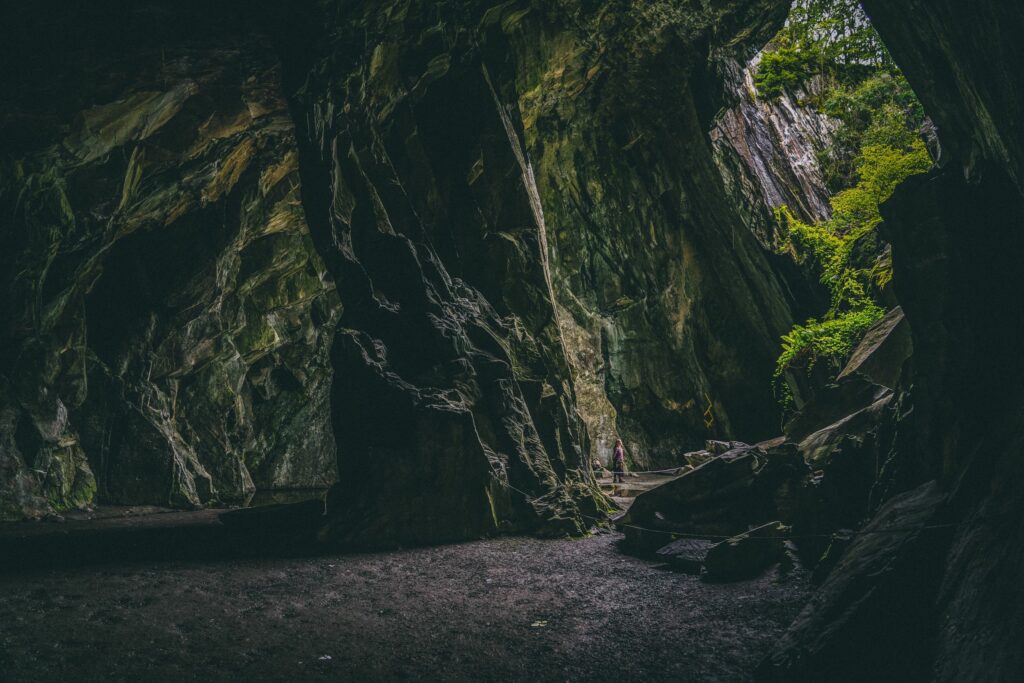
Characteristics of the Grogoch – Symbols of Ireland
Again, the Grogochs are known to be very pleasant and friendly. They love being around people and are often helpful to humans in need. Geogochs have the power of invisibility, and they often roam around using this power. They don’t let people observe them unless they are trusted.
When they are invisible and not around trusted people, Grogochs will look for peculiar jobs to do. They love keeping themselves busy. However, they have some bizarre habits, including getting under one’s feet and roaming around houses.
If they think someone is friendly, they will go into their house and start socialising or helping. However, if the home is resided by a priest or minister, they will be too afraid to enter.
Changelings – Terrifying Creatures from Irish Myth
Changelings are not often considered symbols of Ireland, but they are interesting creatures that have fascinated and terrified Irish people for a long time. Their impact on folklore earns them a place on this list despite not being known worldwide. There are also some illustrations of changelings that were found in Irish folklore.
What do these creatures look like? Their proper form is unknown because they can shapeshift. They were known to pose as humans but always had some fairy characteristics or traits that were difficult to hide, giving away their true identity. Changelings usually replaced a human child.
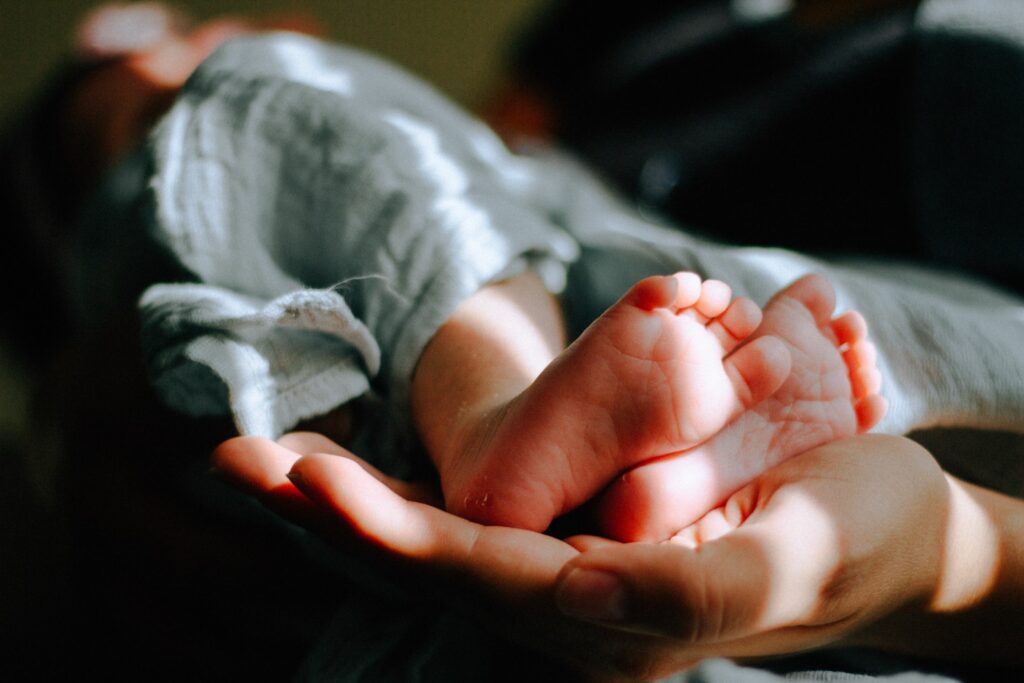
People in ancient times believed that children were supposed to be born healthy. If a newborn had any medical issue, it was thought that it could be a fairy rather than their real baby, which is quite sad. Changelings were sometimes considered elderly fairies brought to die in the mortal world.
The Fairy World is Prominent Among the Symbols of Ireland
If the belief in Changelings proves one thing, it will be that people believed in the Fairy World in Ireland. The Fairy World should stand the tallest among all the symbols of Ireland. This is because it shaped most of the heritage and cultural beliefs of the Irish people and culture. People used the legends of the Fairy World to explain what they had no control over in their real lives.
For example, the legend of the Changeling was used to describe children who had autism or ADHD. Because medicine was not advanced back then, people hung their problems on the fairy hook. They could not explain why their children acted as they did, so they assumed they were a fairy, and their natural child was taken.
So, what happens when a child’s condition improves, or they learn how to behave to avoid being called a fairy? They would explain that by assuming that the fairies returned them.
The Origin of the Belief in Fairies – Irish Symbolism
Centuries ago, Ireland witnessed a high percentage of deaths among pregnant women due to the lack of medical advancement at the time. Many women either died or suffered from a miscarriage during pregnancy.
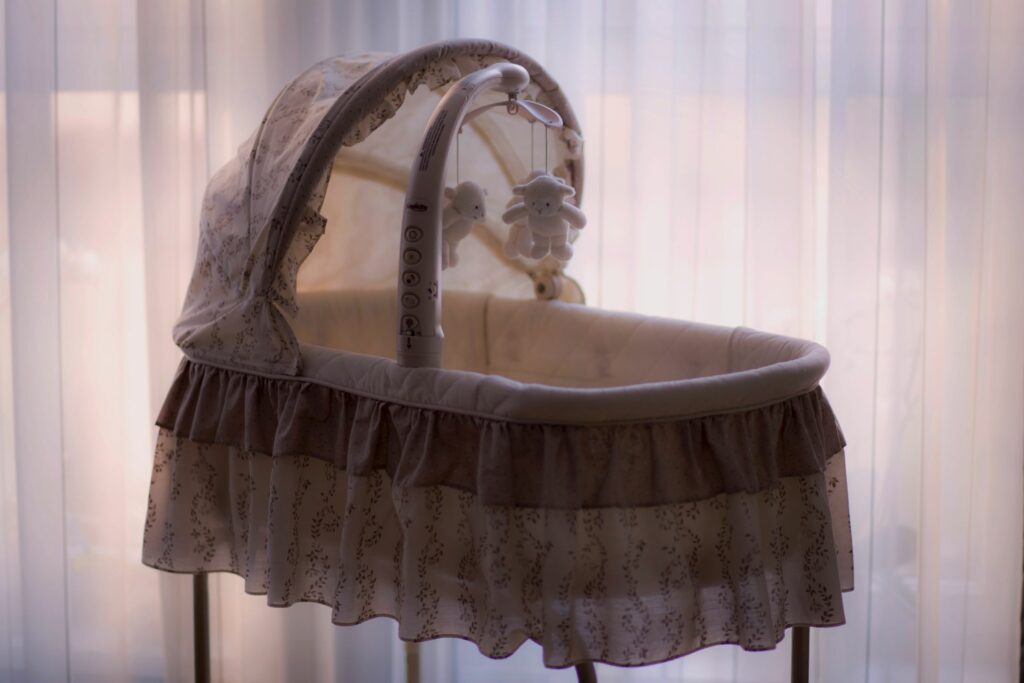
This was most common in the country’s rural areas, and it was believed that the fairies preferred to steal boys over girls. When a mother loses her child, they would assume that the fairies abducted them. This explains why mothers dressed their boys just like the girls did in the past.
Dresses were common among young boys to confuse the fairies. They used to believe that fairies exchanged or stole boys more often. So, they thought dressing them as girls would trick the fairies into not taking them.
People placed the blame for a lot of problems on the fairy world. It helped people to have something to explain parts of life which had yet to be explained logically.
The Banshee – Irish Symbols
The symbols of Ireland seem endless, and they are all almost equally significant. The whole world recognises some as the most prominent symbols of Ireland, while others are only known in specific regions of Ireland.
To the Celtic folks, all symbols of Ireland are recognisable, but around the world, only the most famous are associated with Ireland. Our next famous Irish symbol is the Banshee.
What Exactly is a Banshee? Explaining this Haunting Symbol of Ireland
The Banshee is a mythical creature that is sometimes known by different names throughout Irish mythology. Despite its popularity, it’s not one of the most pleasurable symbols of Ireland. Instead, it’s an omen of death.
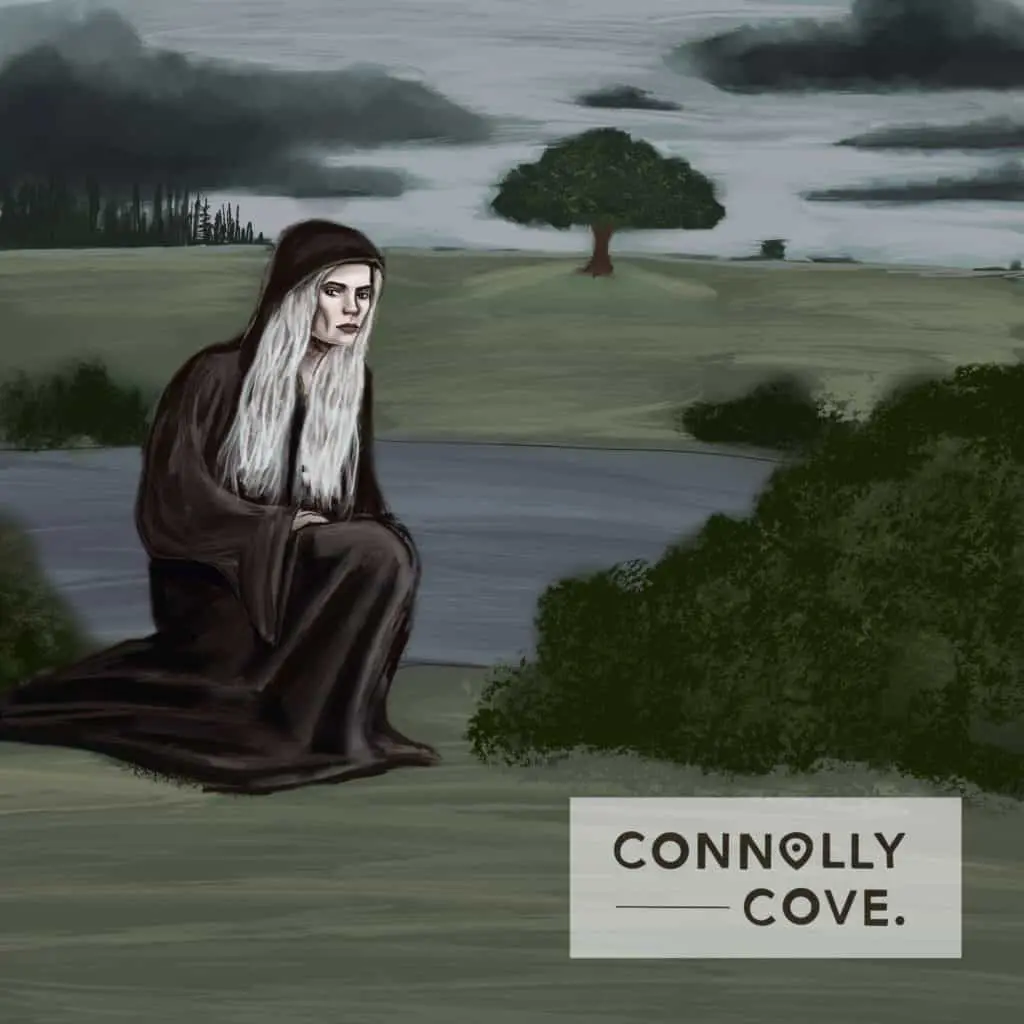
But this female spirit is not as scary as you think. Her intentions have shifted over the years as people told her story, and it expanded far beyond Ireland. Again, mythology shaped much of Irish culture during ancient times.
The Role of the Banshee in Irish Mythology
The Banshee is popular in a broader range of cultures than just Irish culture. This mythical creature has also appeared in many tales in Scottish folklore. According to mythology, the Banshee is a female spirit that notifies the people of an approaching death.
The Banshee either shows up to the family of someone who’s going die soon or is heard wailing. People in the past believed wailing at funerals was an essential part of the Irish wake. It was thought that wailing helped to guide the deceased souls to the afterlife. Professional wailers even existed, going from funeral to funeral to perform the musical lament.
Irish mythology gave us different versions of how the Banshee appeared. One version claims she was much like Mother Gothel from Disney’s ‘Tangled, an old lady who transformed into a young, beautiful woman.
She would stun people with her unusual beauty, yet she remained a sign of demise. As part of the Banshee lore, it was accepted that she could change her appearance into an older woman, a beautiful young lady, and even a crow, similar to the Morrigan, the Celtic Goddess of War and Death.
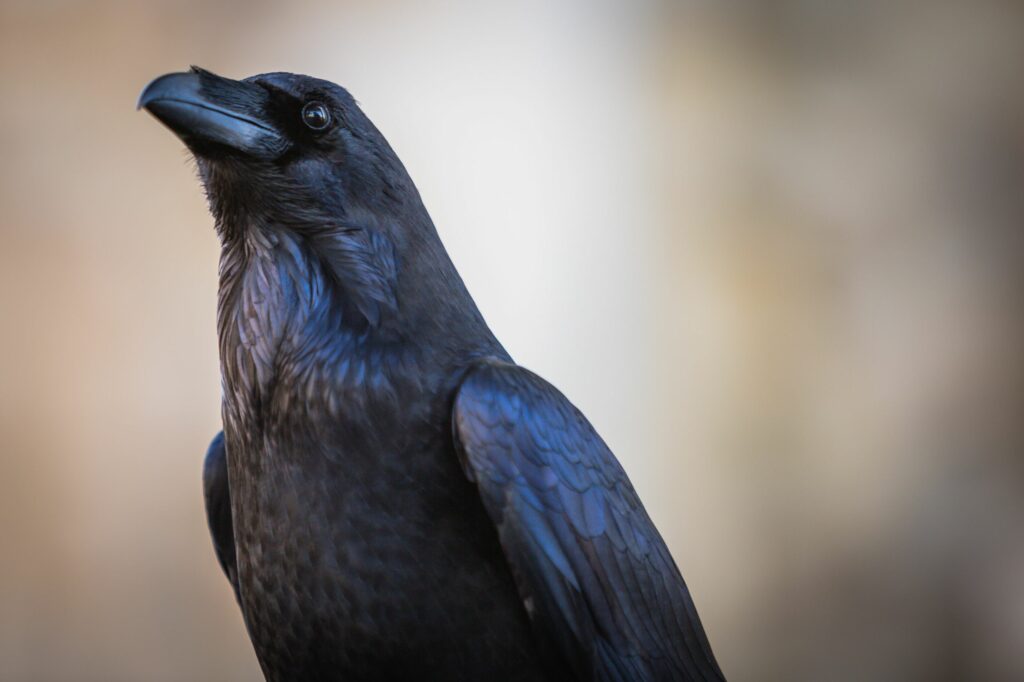
The appearance of the Banshee varies from one region to another. Some parts of Ireland don’t think it was a living woman. Those regions believed that the Banshee was a female spirit. However, they thought it showed up as a bird-like creature rather than a human being.
They believed this creature landed on the soon-to-die person’s window and stayed there as the clock ticked until they passed.
The Origin of the Banshee
Like many cultural notions, it’s not always easy to learn where the Banshee came from. Most of the myths carved into our cultures go back to ancient times. People started believing in certain things or carrying out customs because they learned about them when they were young.
To make a long story short, it’s not clear where the Banshee myth comes from. However, this brings us back to a critical point: blaming everything on the fairy world. It was a way of explaining the things we had no control over.
But, there is a story behind the evocation of the Banshee. In the past, people believed that it was unjust for young or pregnant women to die before their families. Thus, they pictured Banshees as deceased women who came back to watch over their families.
However, according to Irish mythology, the Banshee has another origin. She is a fairy who descended from the supernatural race of the Tuatha de Danann.
More Depictions of the Irish Symbol of the Banshee
It is widely known that the Banshee is usually a beautiful woman or a bird-like creature. However, some regions perceived the banshee with a different look. These differences are to blame on the tales of the mythology. Sometimes, a creature shows up in a tale with all the traits of the Banshee but is not labelled as such.
This led people to identify creatures with the same characteristics as her as the Banshee. Aside from the bird-like theory, the Banshee is featured in many tales as a young or older woman.
There were tales in which the Banshee appeared as a spooky older woman sitting in the woods. The depiction included her wearing a green dress and a grey cloak. Her hair was long and grey, and she always had a comb nearby.
This leads us to the reason for the comb being among the symbols of Ireland. It’s highly related to the tale of the Banshee.
In other stories, the Banshee is a mesmerising woman with flaming red hair and all-white attire. Some scholars identified the Banshee with popular goddesses like Brigid or the Morrigan. She sat by the river and wept for hours. Thus, her eyes were usually red.
The Armor Laundress
There is one more depiction of the Banshee in the folklore. But, this time, it stems from Scottish legends. Scottish mythology states that the Banshee appeared near rivers as a washerwoman. She usually sat there washing blood-stained attires that belonged to soon-to-die soldiers.
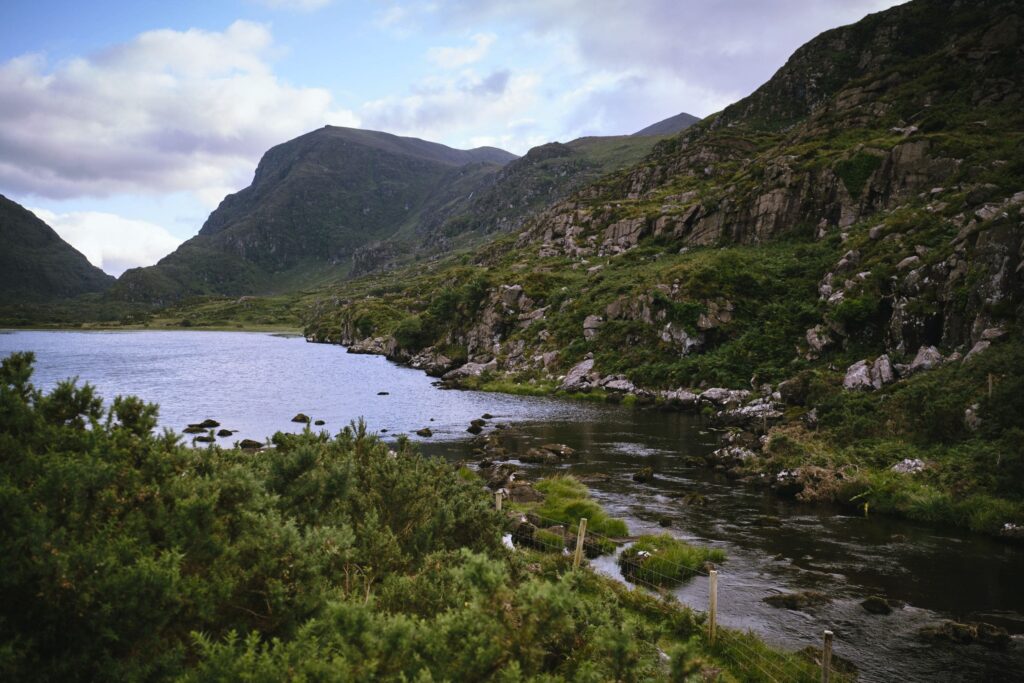
Men who saw the Banshee around the rivers knew they wouldn’t survive the battle. Returning to the bird-like theory, the Banshee has appeared in many tales as other animals, including a weasel and a hare.
The Banshee was a tragic figure. People feared her even though she never hurt humans or caused their deaths. Instead, she had the gift of foresight and wanted to warn families of their loved ones’ deaths. The cry of the Banshee is often compared to the screech of a barn owl. The barn owl is nocturnal and makes an eerie cry, which may have fuelled many people’s fear of the Banshee legend.
Pookas – a Mischievous Irish Symbol
If you think you’ve read enough scary stories in Irish mythology, think again. Pookas are considered the most frightening of all the symbols of Ireland. They are another myth that people of ancient times used to have faith in. You can find plenty of tales in Irish mythology featuring the so-called Pooka.
The main trait of this creature is that they enjoy freaking people out. There wasn’t a single source that claimed they were hostile, yet they were bold and wild. They reside over the mountains and hills. While most tales indicate they had disastrous behaviour, others claimed otherwise.
Such differences vary depending on which part of Ireland you come from. There are some parts around the country, though rare, where Pookas helped with harvesting and cultivating. Opinions regarding the creature’s behaviour differ, but they are still deemed a sign of bad luck. They have often been associated with Halloween.
The Pookas and Halloween
People of ancient Ireland believed that November was the month of the Pookas. They even used to dress up as Pookas during Samhain. Samhain would become modern-day Halloween and was, at the time, one of four ancient Celtic festivals.
Others stayed at their homes, afraid of the stories they heard about Pookas. It was believed that they harmed children.
What makes Irish mythology interesting is its connection to the mystical creatures of the modern world. More recent incarnations of the Pookas include the Boogeyman and the Easter Bunny. Some sources claim that those and other fairy-like creatures derive from the Pookas.
You can find different forms of the name, including Puca, Plica, Puka, Phuca, or Pookha, across different legends and tales. However, they all refer to the same creature. Pooka derives from the old Irish word Puca. It means a goblin or ghost, an ugly dwarf-like creature.
Other sources claim that Pooka comes from the Scandinavian word Puke or Pook. The literal meaning of this word is ‘the nature spirit’, or ‘the spirit of nature’. Irish people feared and respected the Pookas, considered mischievous creatures that enjoyed causing chaos.
What is a Pooka? Explaining this Irish Symbol
Let’s get to the point of what that Pooka is. The Pooka is a creature that can take any form; people refer to these kinds of creatures as shapeshifters. They could be a goat, goblin, rabbit, dog, or even a human being, an older man. They only appear at night, which makes their form even more challenging to identify.
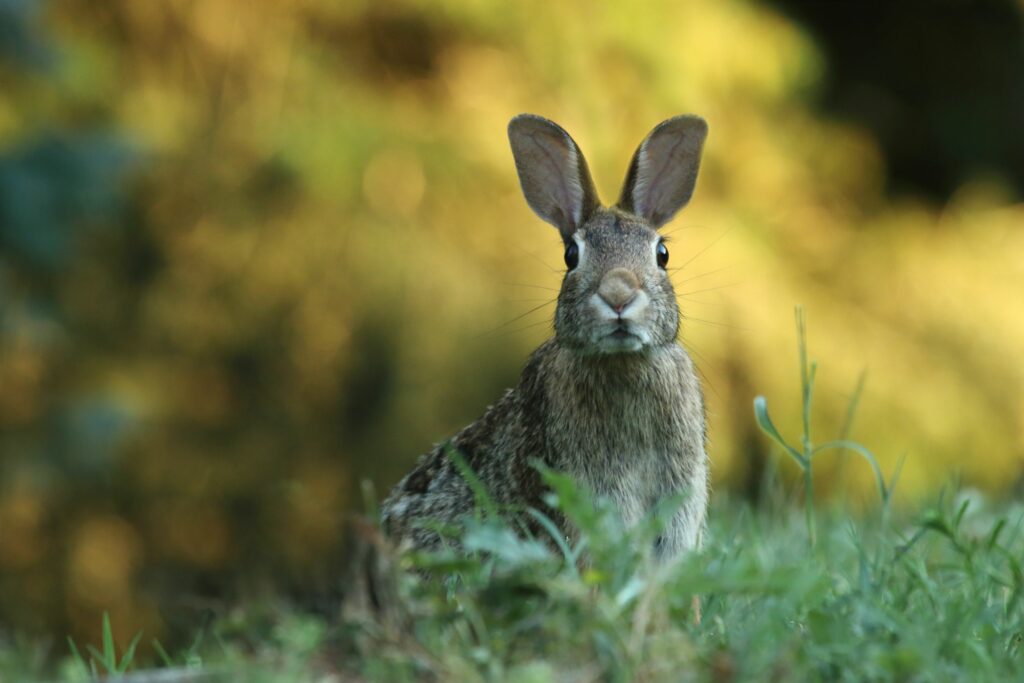
Despite all these forms, people are familiar with the Pooka as a dark horse with golden eyes. Above all else, they possess powers that make them capable of communicating with humans. These dark horses were able to speak just like humans.
Interestingly, their amusement lies in exaggerating the truth to make those they talk to stray. Despite their bad reputation, no records ever proclaimed that a human being had experienced any damage from them. Some legends say they helped with the harvest.
Facts about Pookas
The Pookas are sneaky and sly, cheaters and good at deception. People also refer to them as fertility spirits, for they have the power to destroy and craft. Most importantly, they can speak as fluently as humans and give accurate predictions and prophecies.
Irish mythology states that the Pookas enjoyed certain acts of mischief. The Pooka usually roams around the countryside performing chaotic acts like destroying gates and knocking down fences.
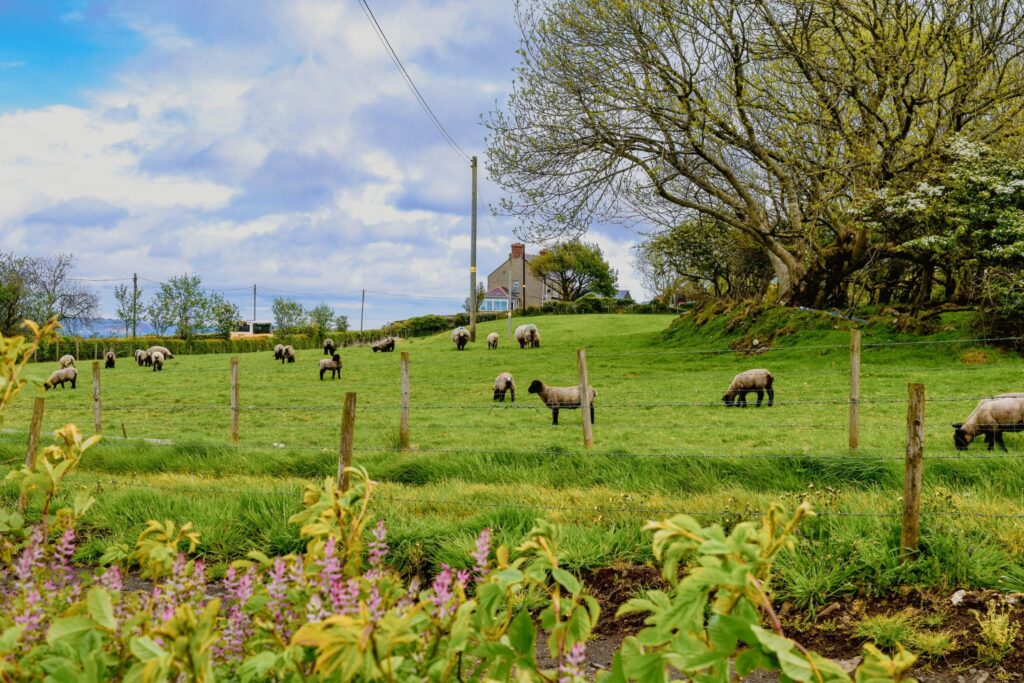
There are Many Interesting Symbols of Ireland
There’s an endless list of creatures and objects recognised as symbols of Ireland, but these are some of the most interesting and famous ones. Each symbol offers a different look at how seemingly random things have impacted Irish Cultures, past and present.
Do you have a favourite Irish symbol? Maybe it’s the Irish Leprechaun or the Irish Clover Symbol. Whatever it is, please share it with us below!
Now that you recognise some of the most famous symbols of Ireland, you may begin to notice them during your travels around the Emerald Isle. Here are some of our favourite Irish travel guides that you may enjoy reading:
Things to do in Galway City | County Derry: An Insight into Fascinating Nature | The Beauty of County Limerick | Waterford: Ireland’s Oldest City






